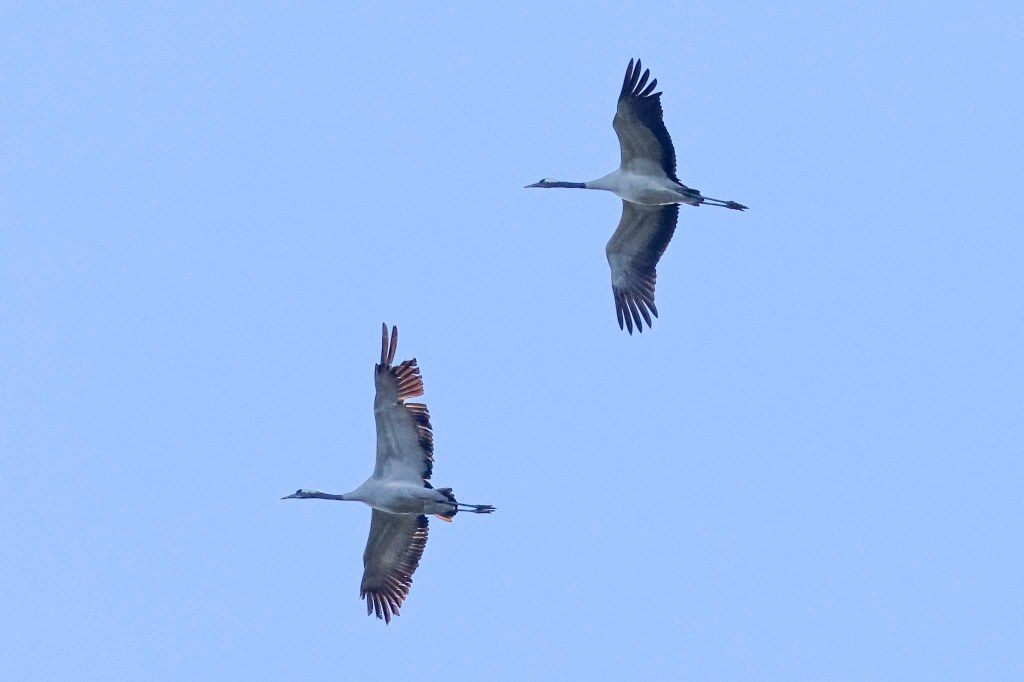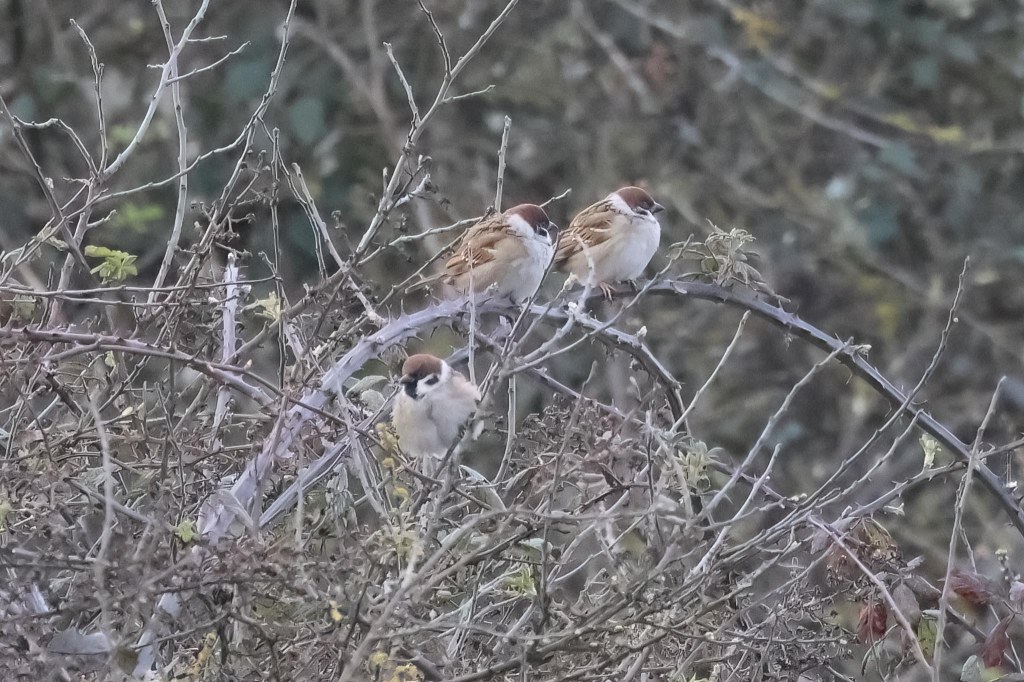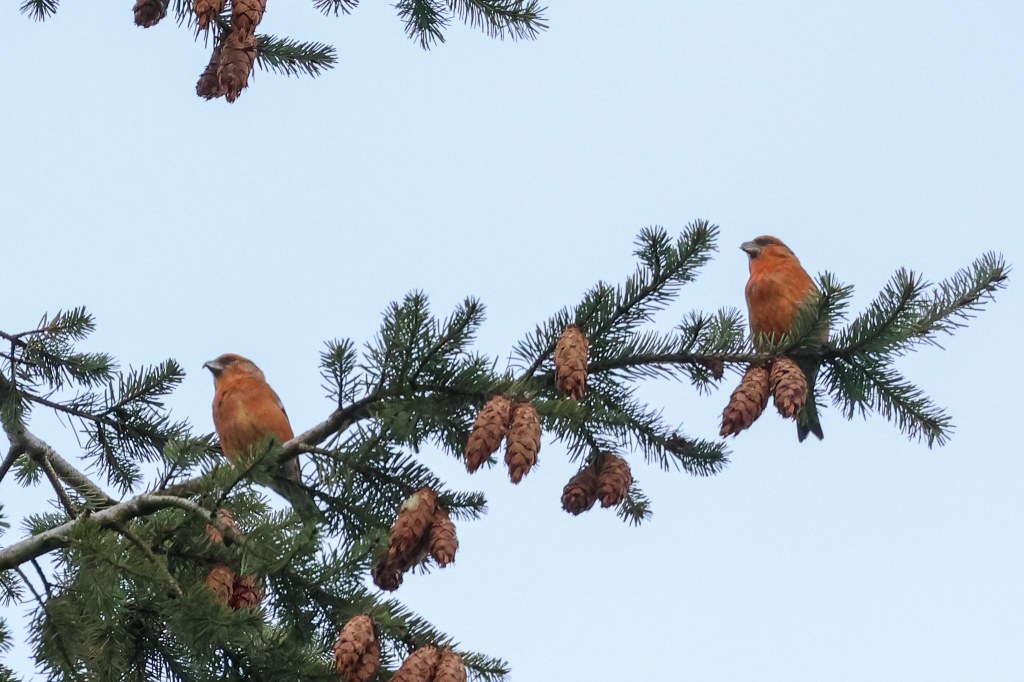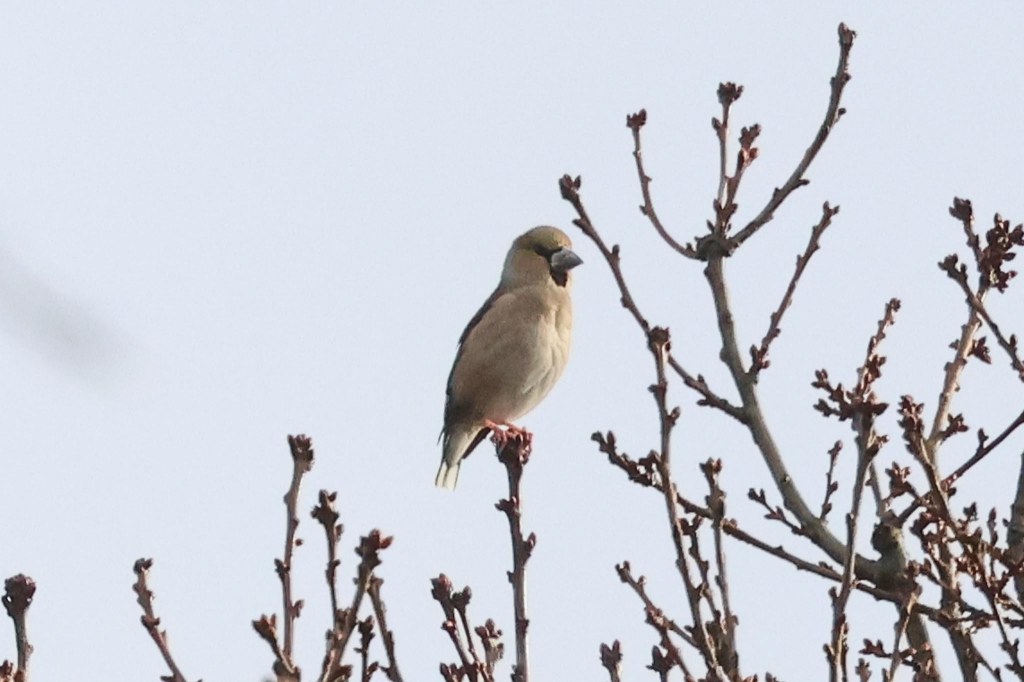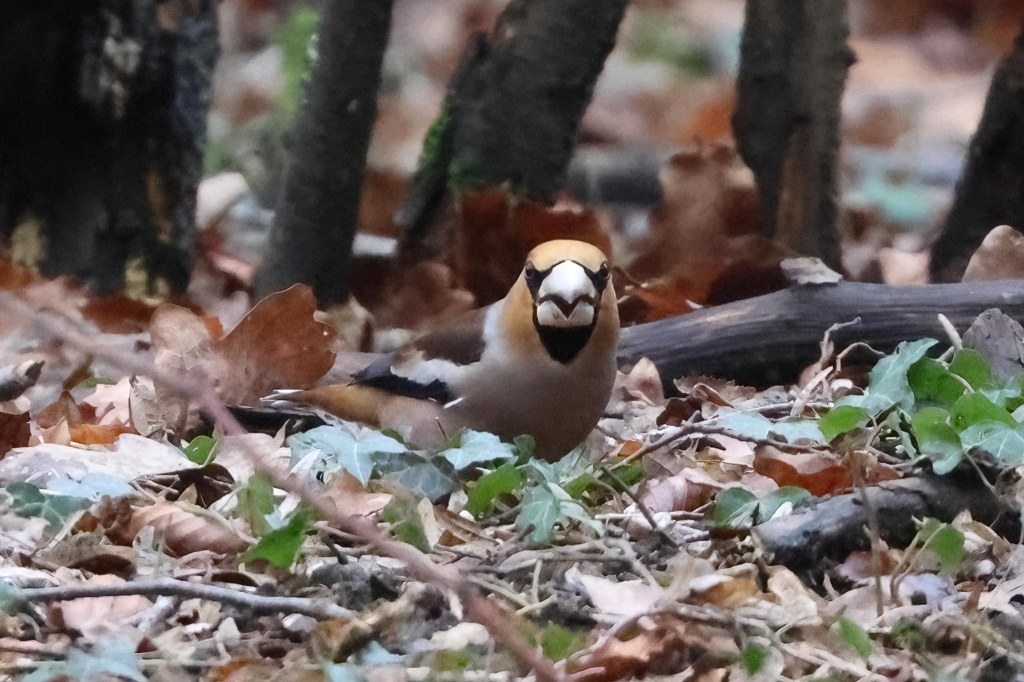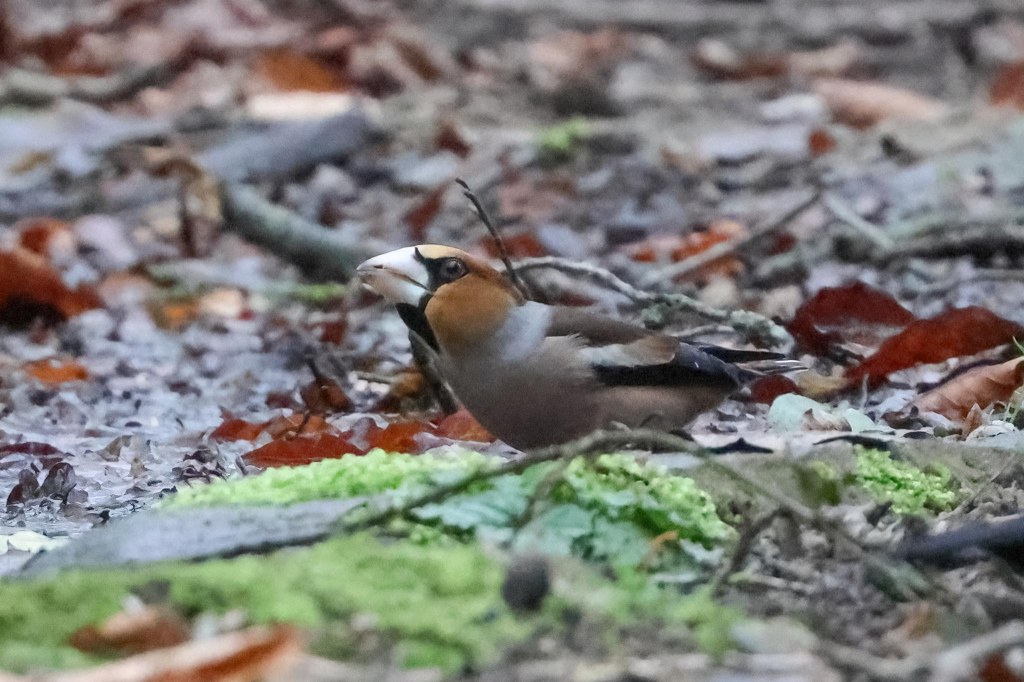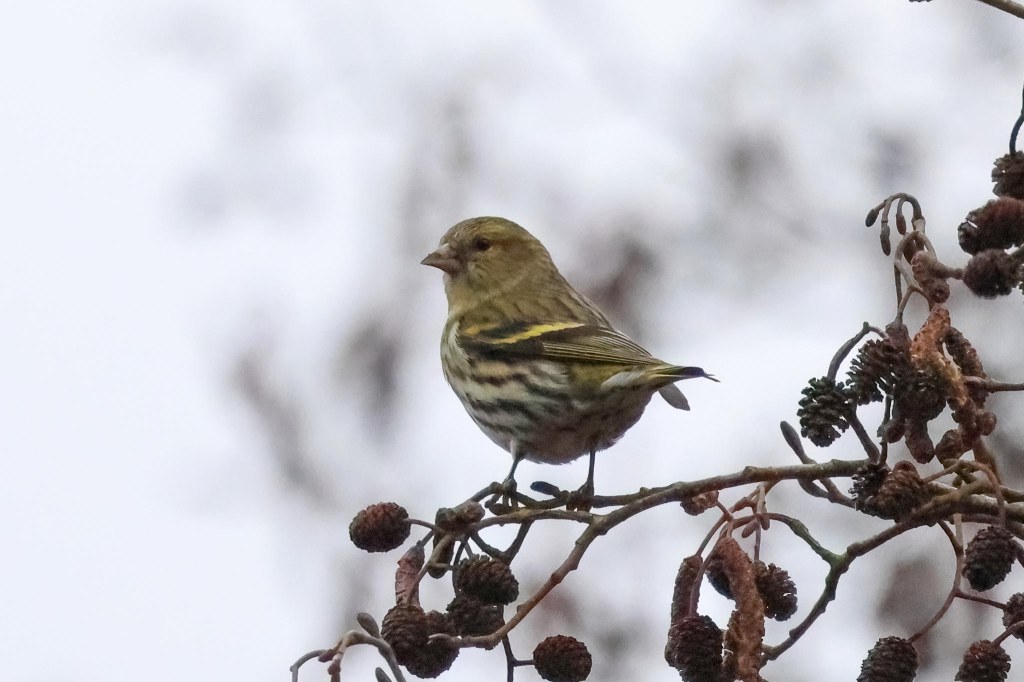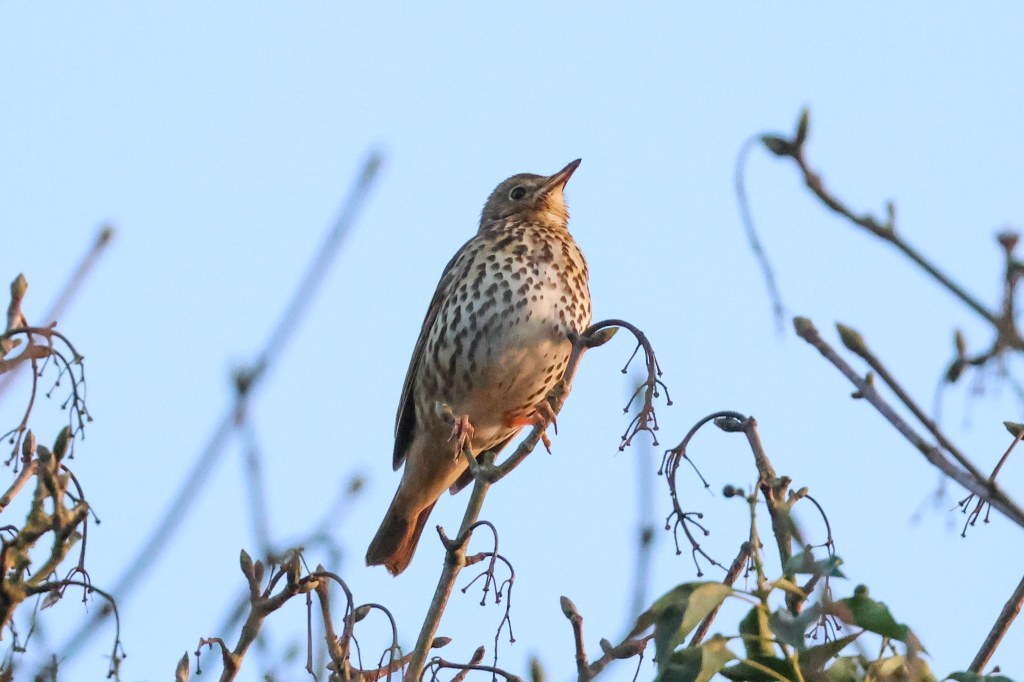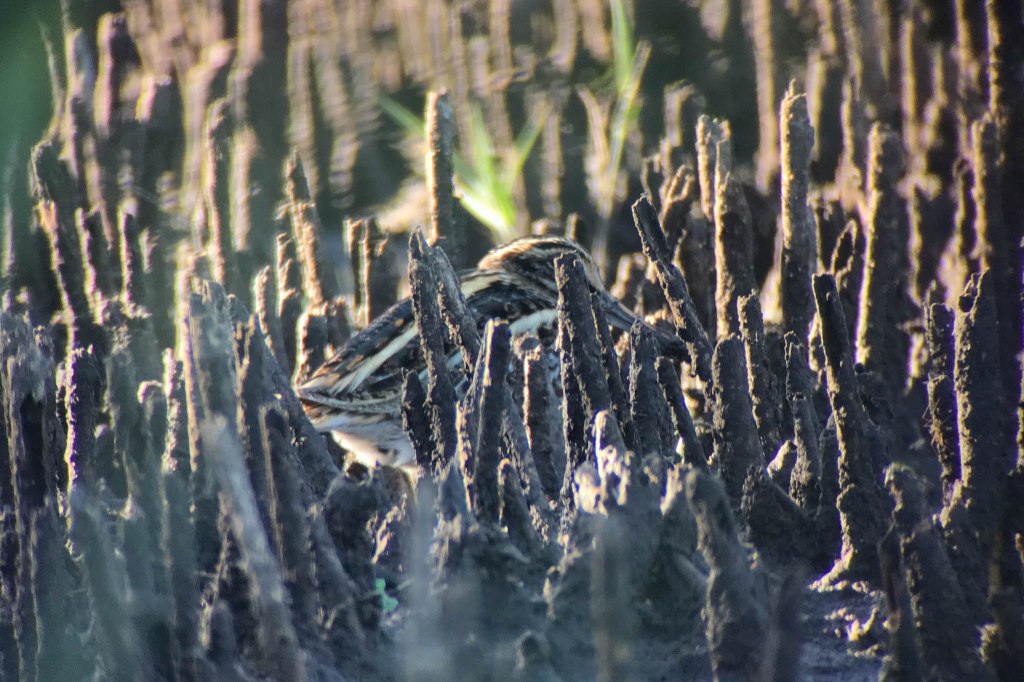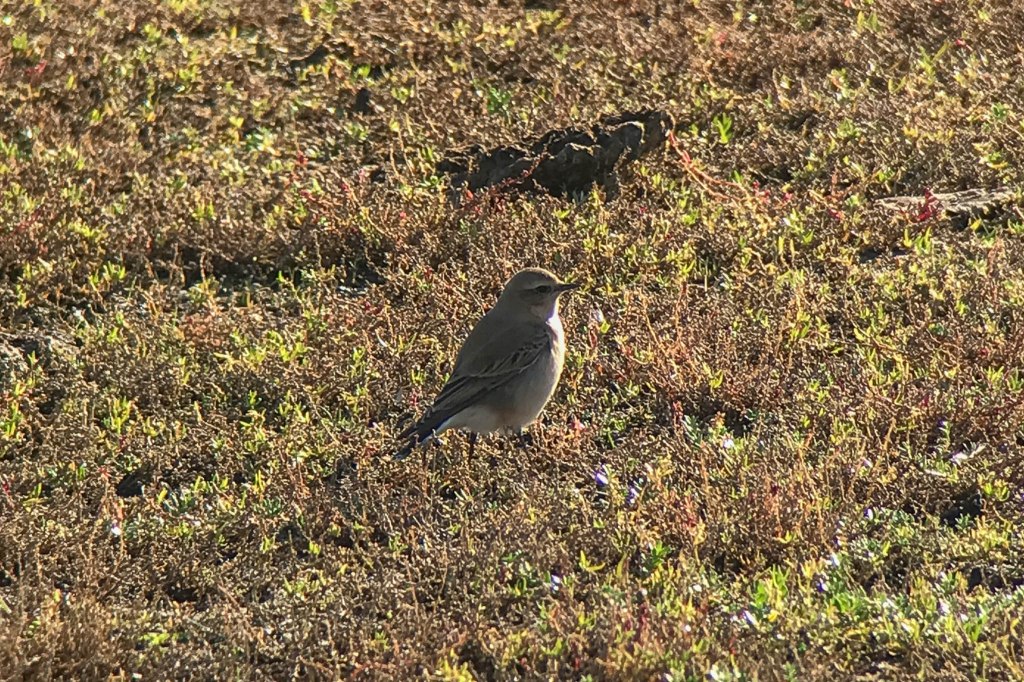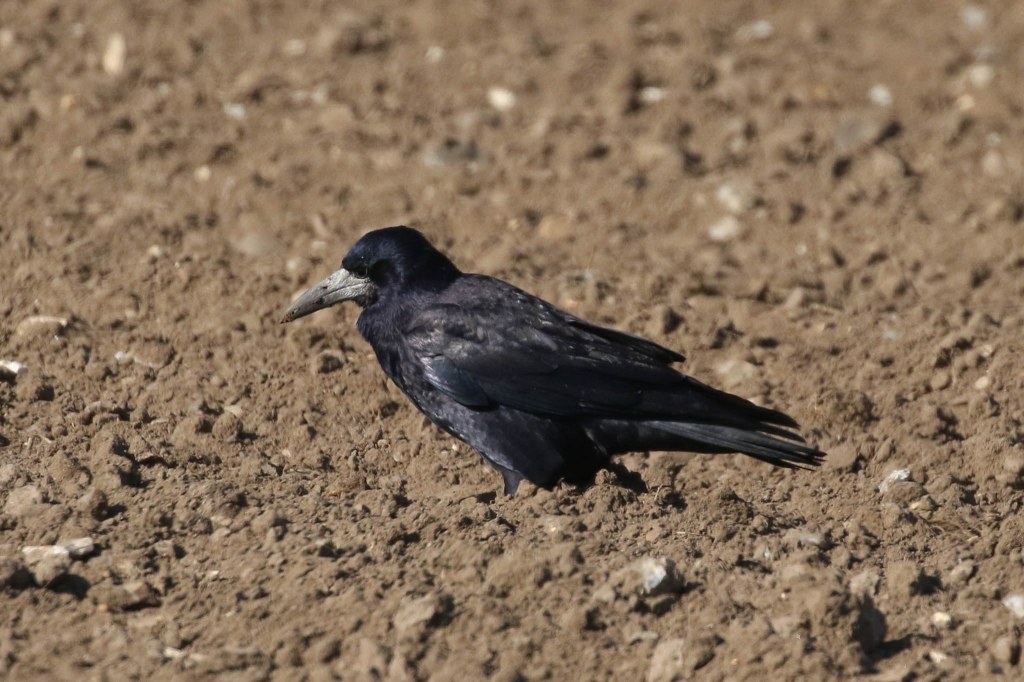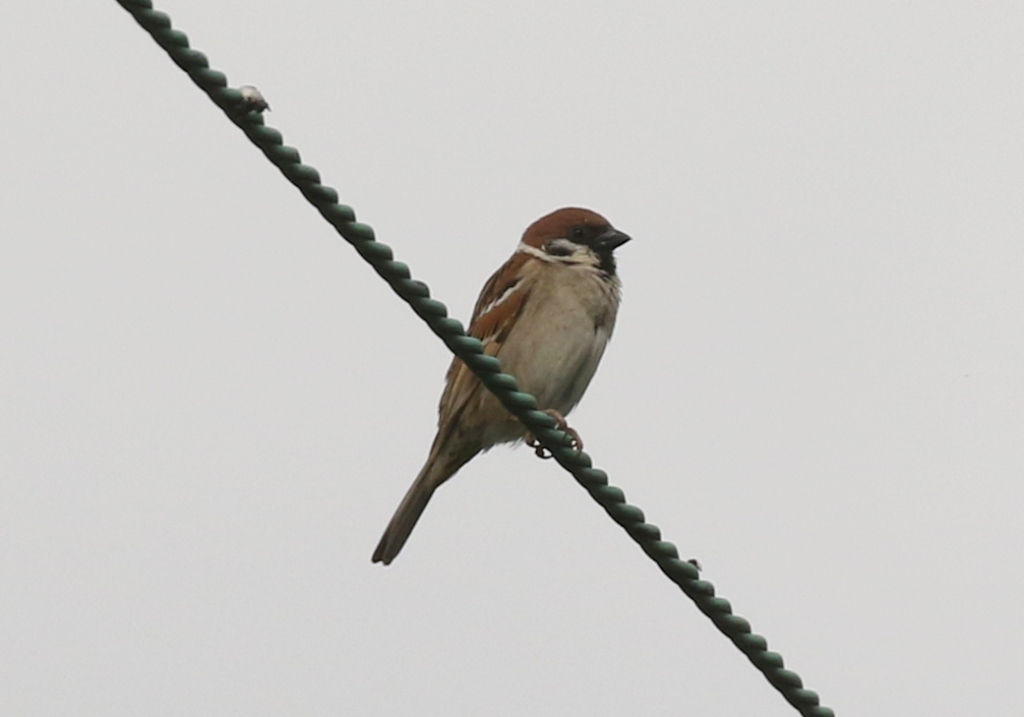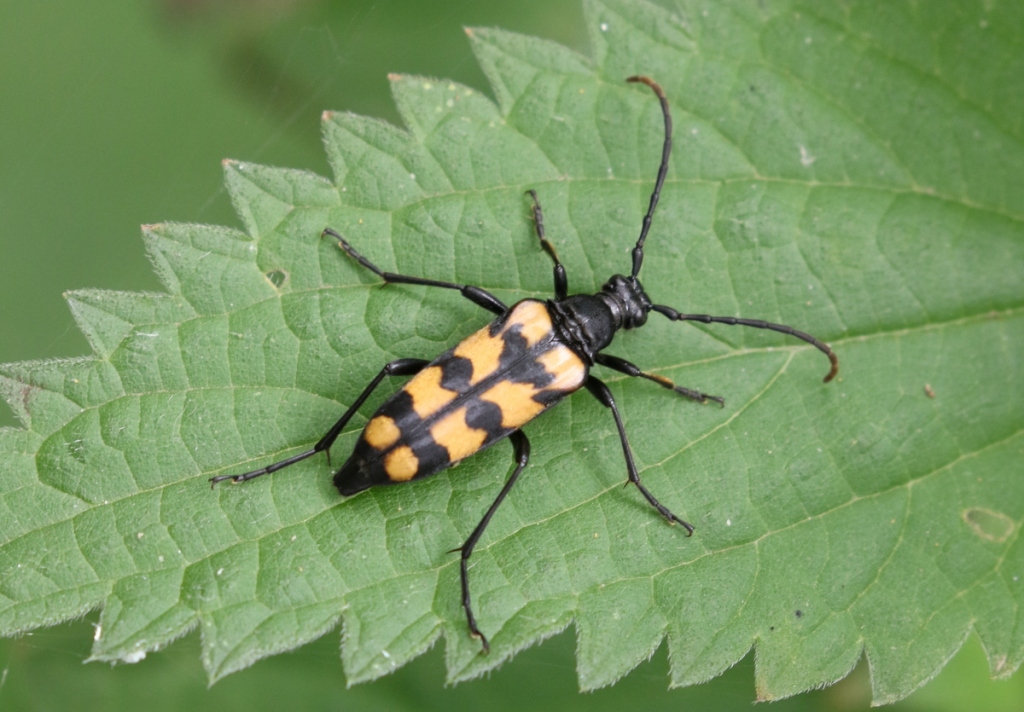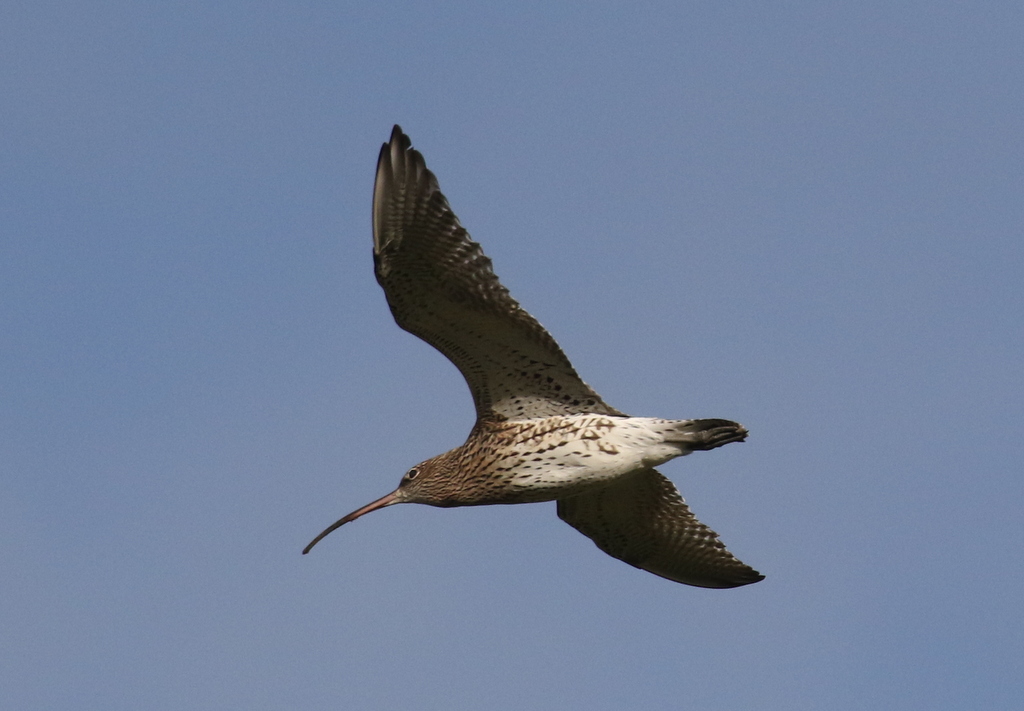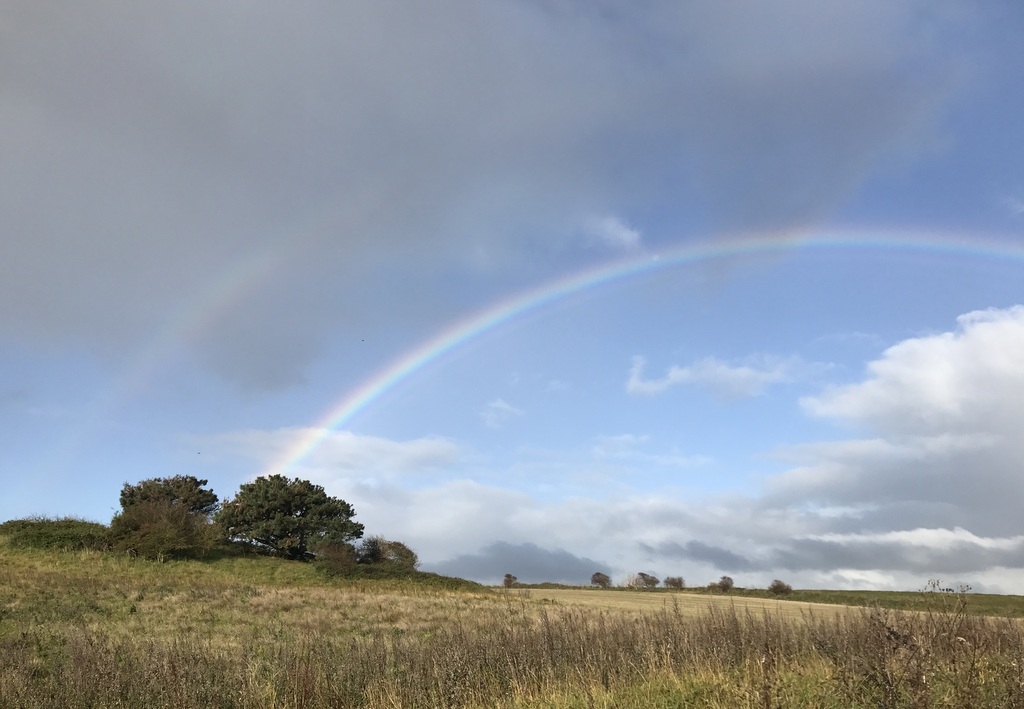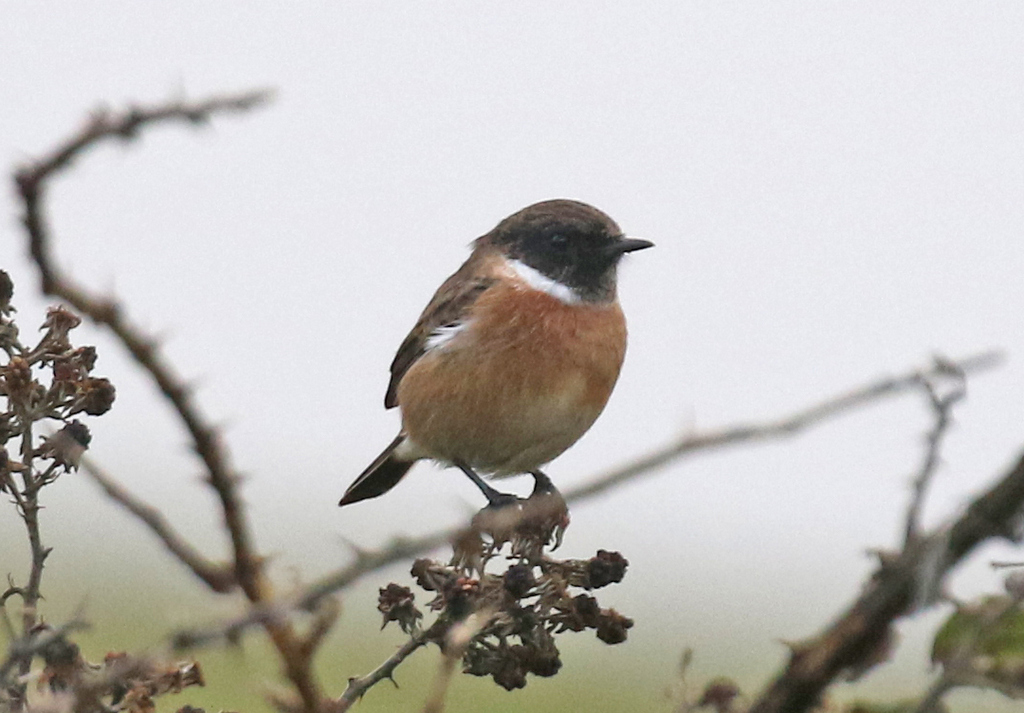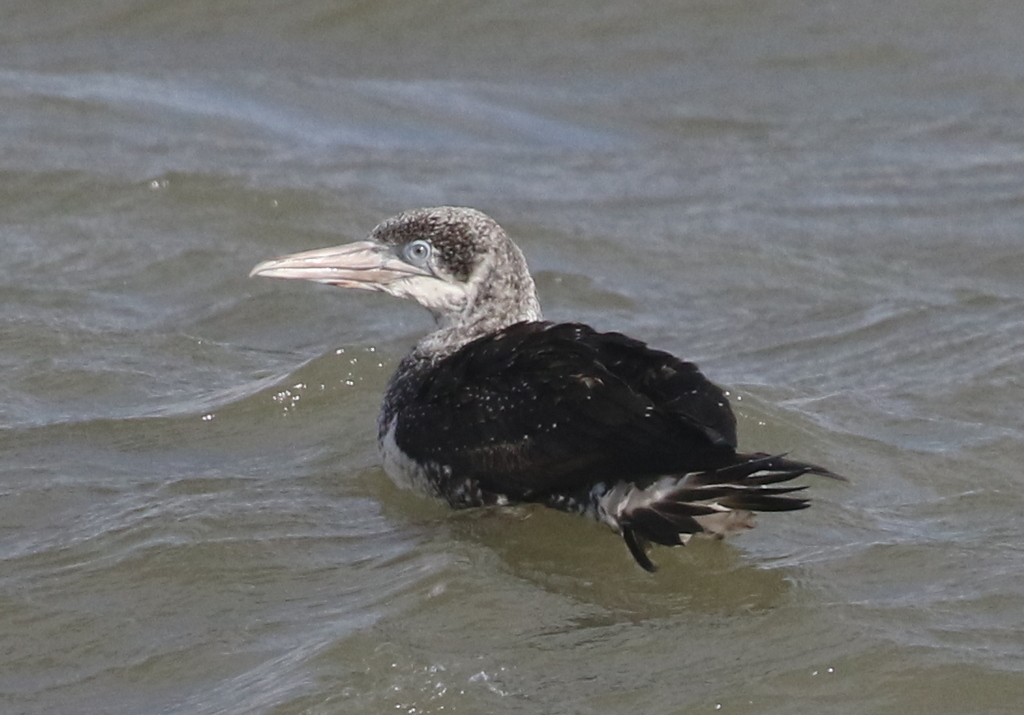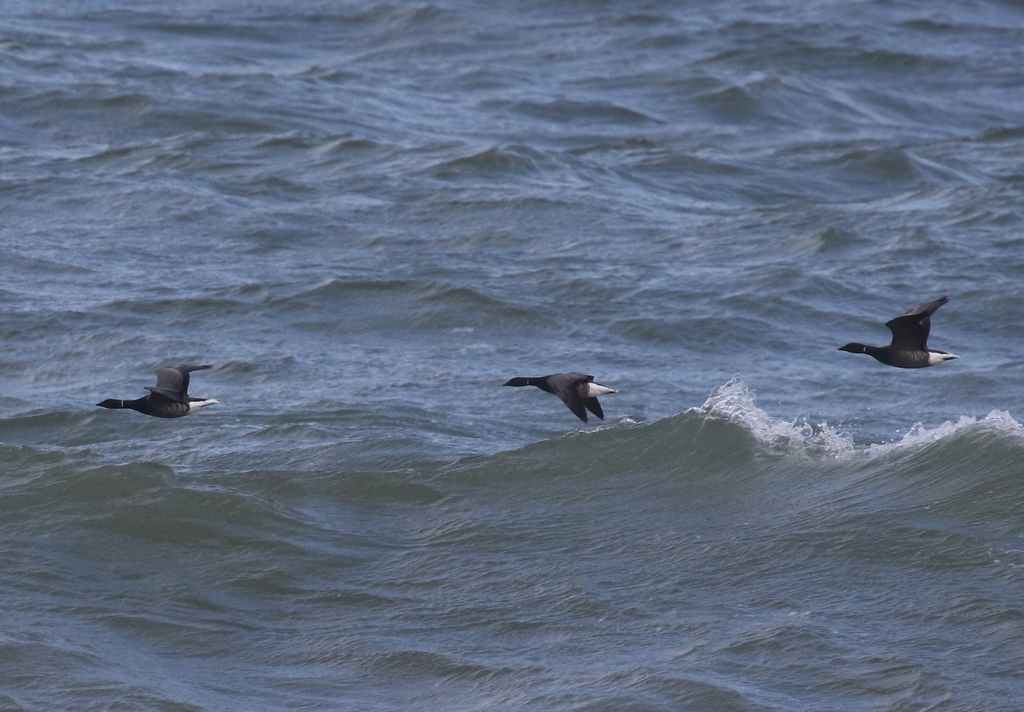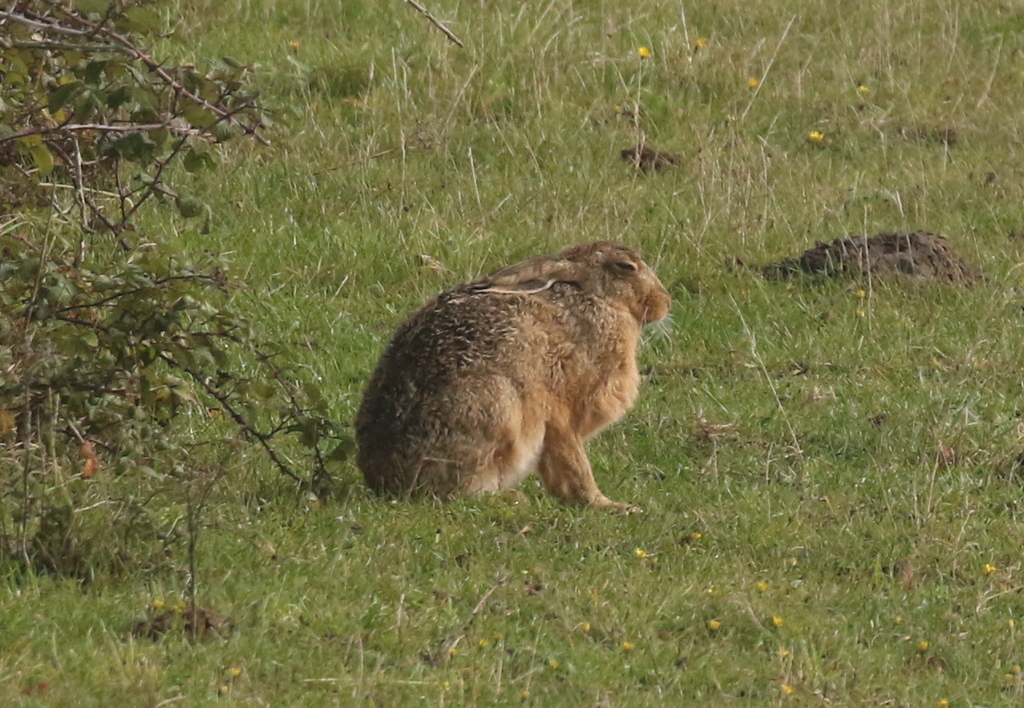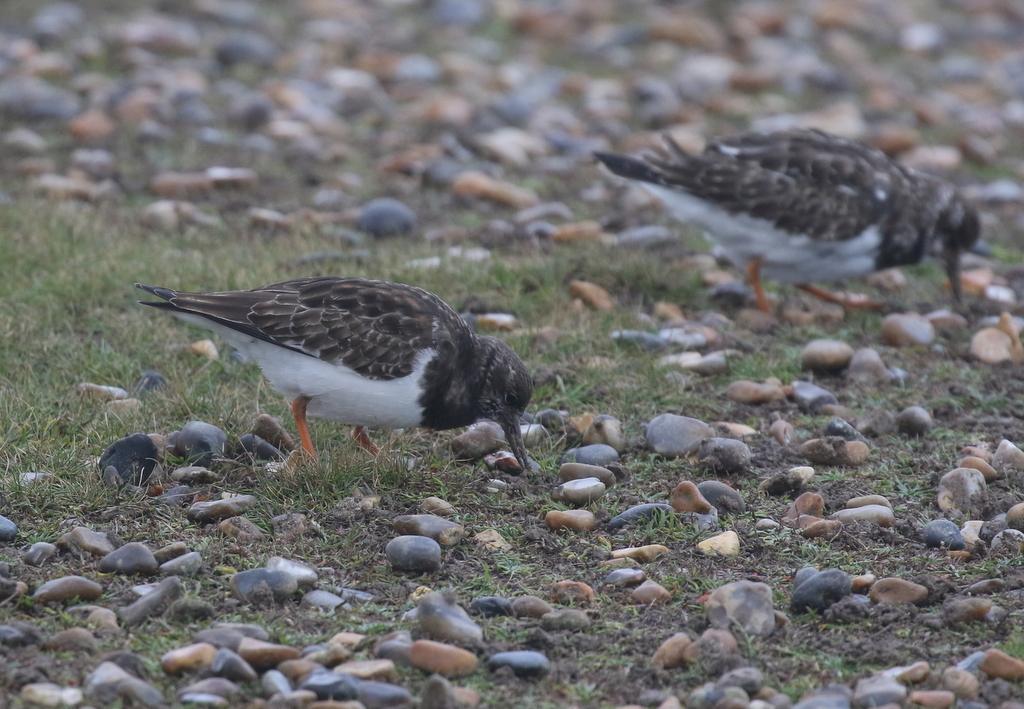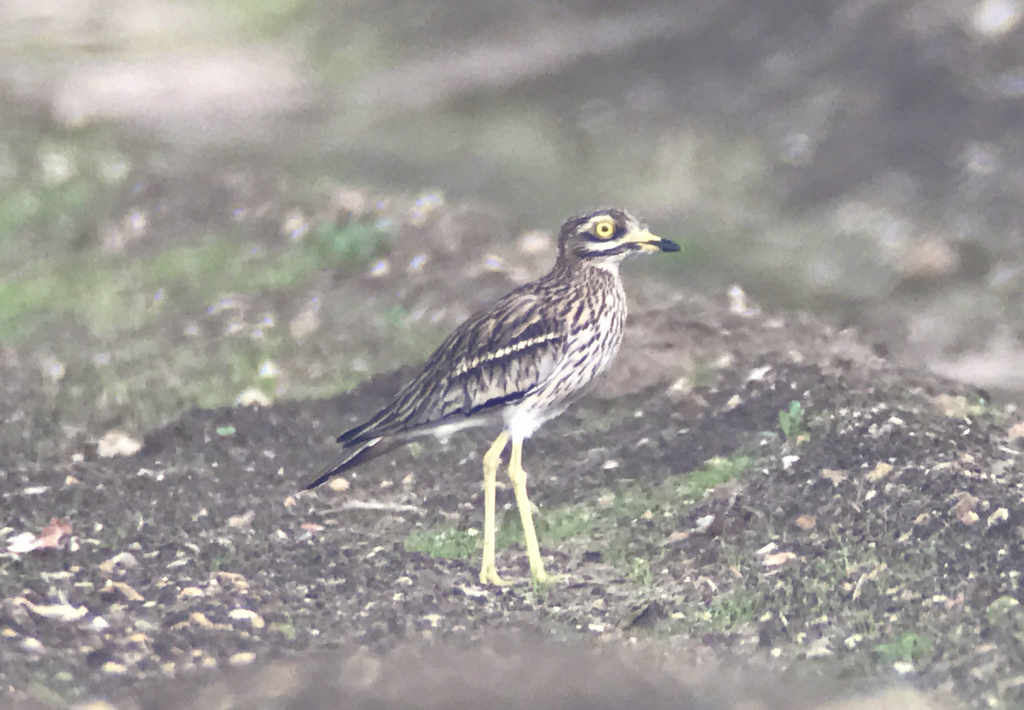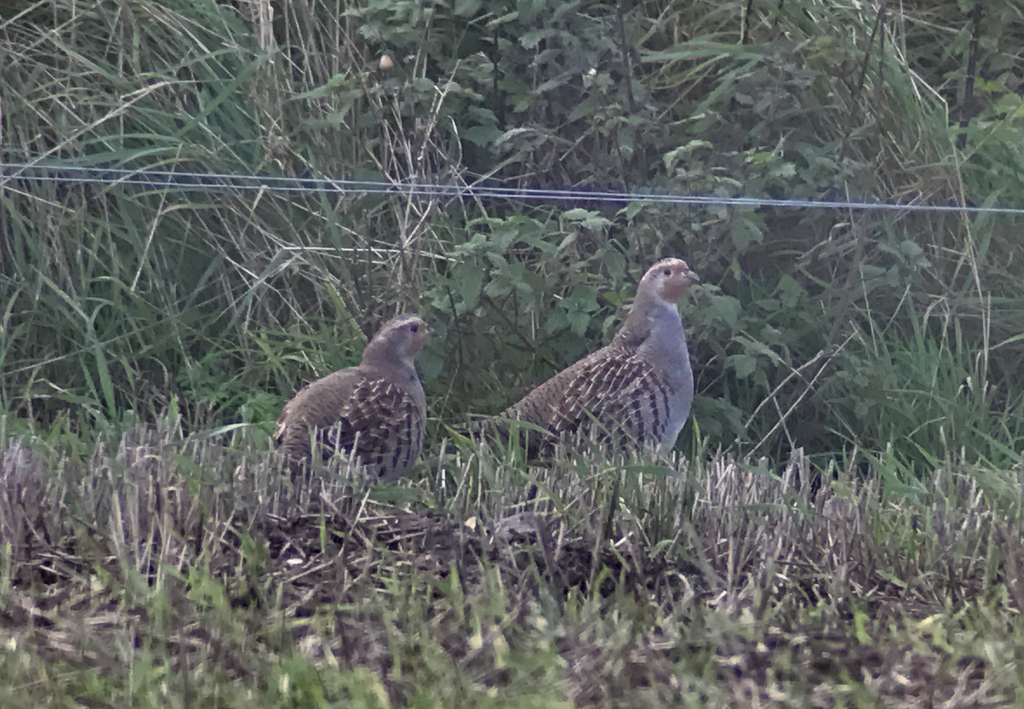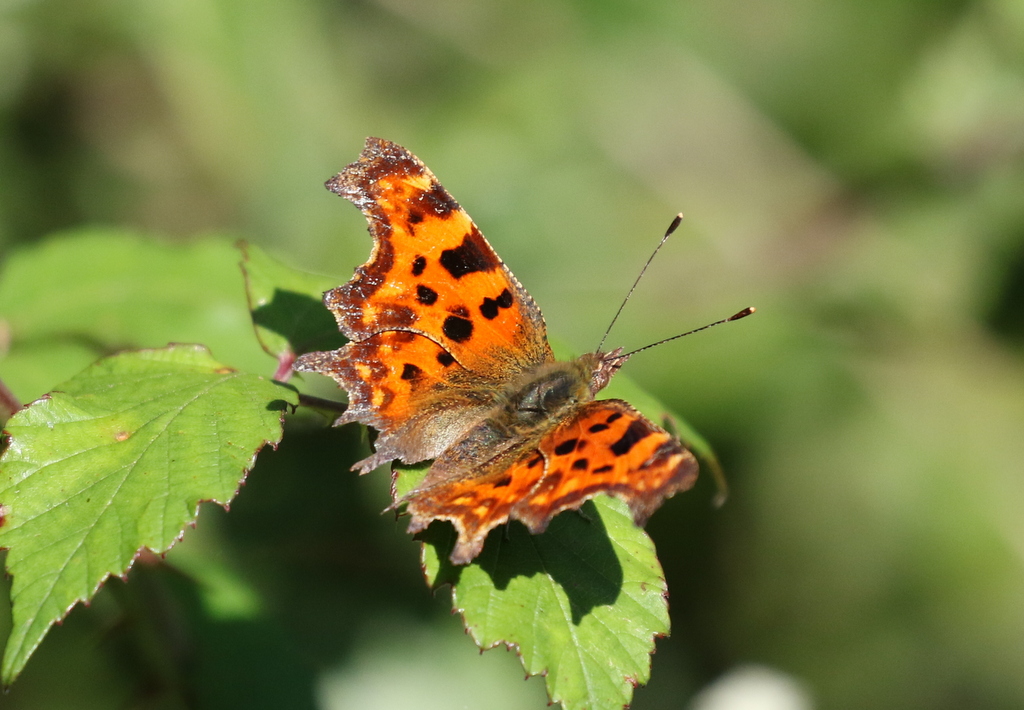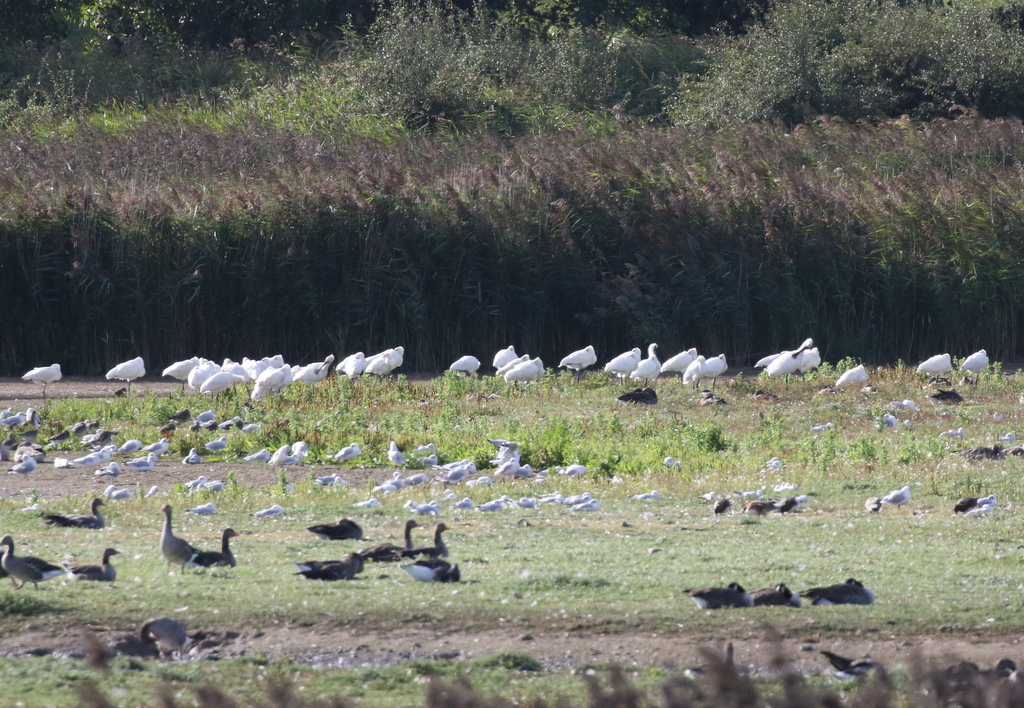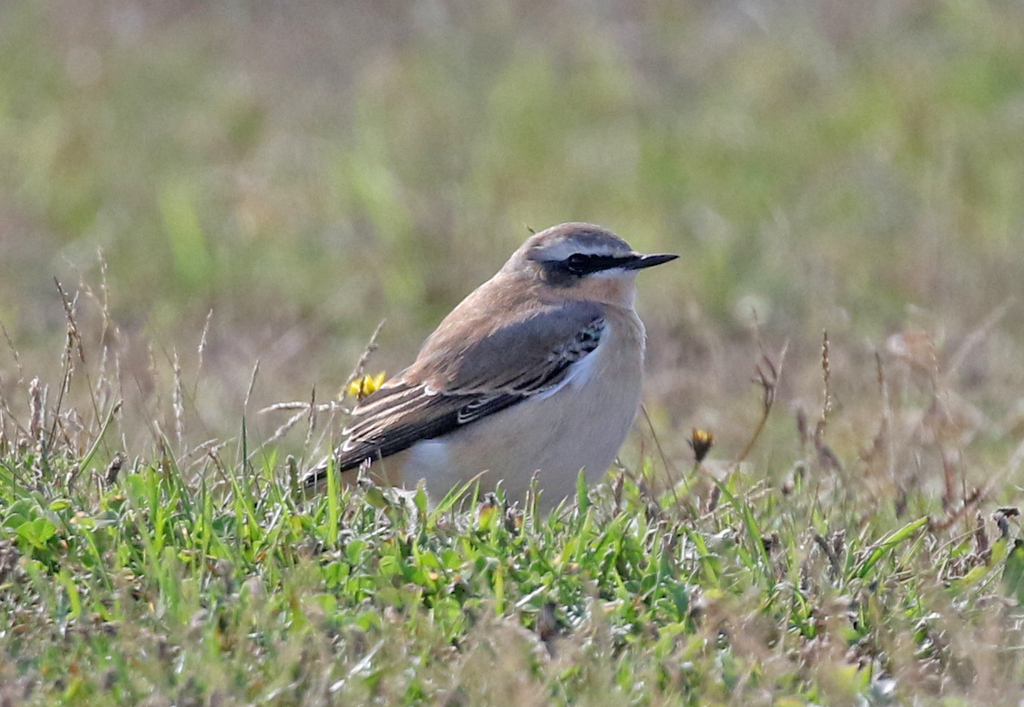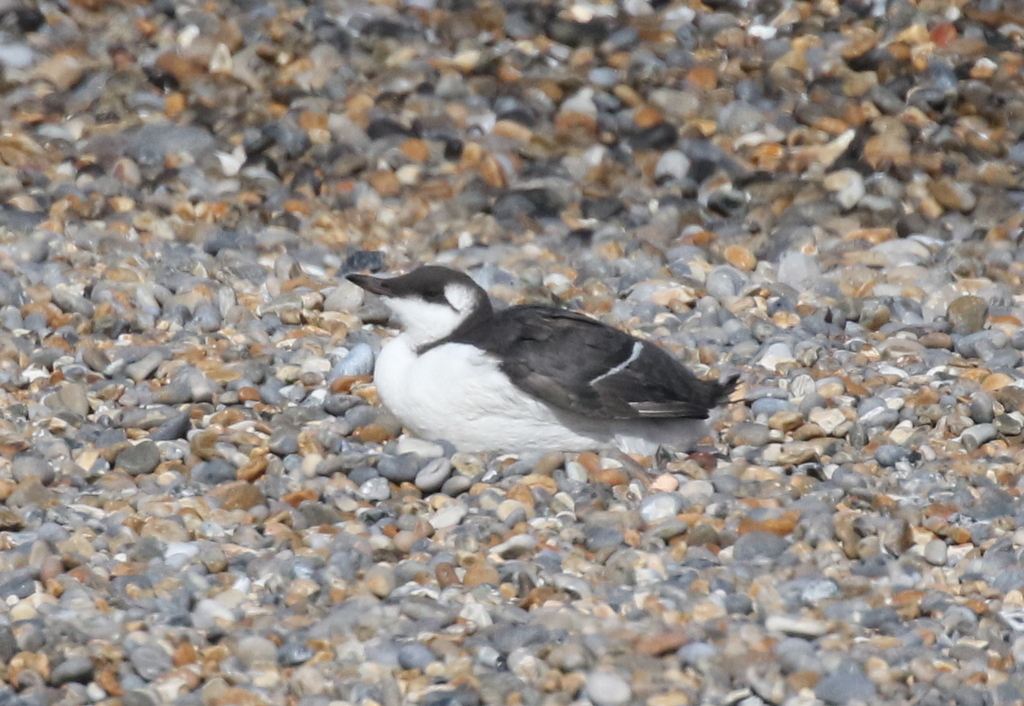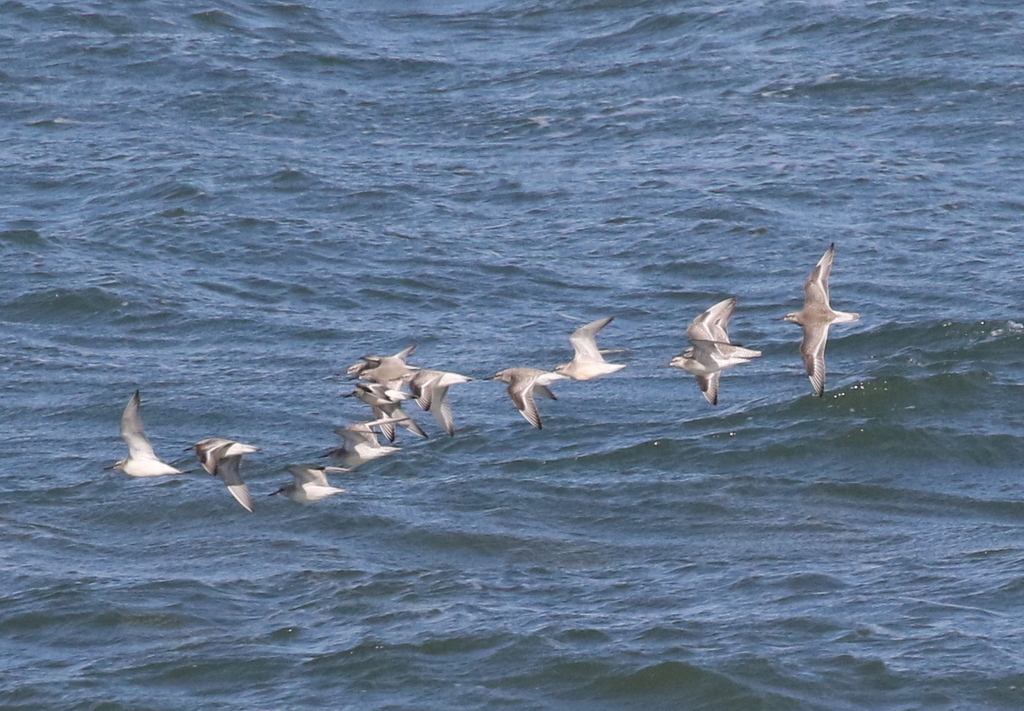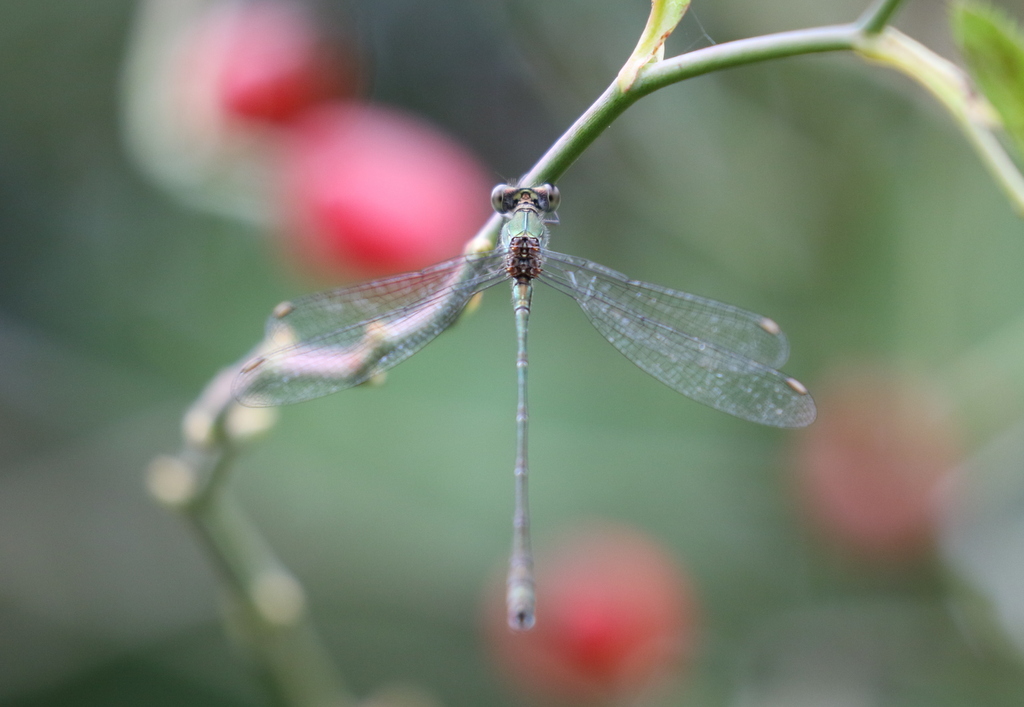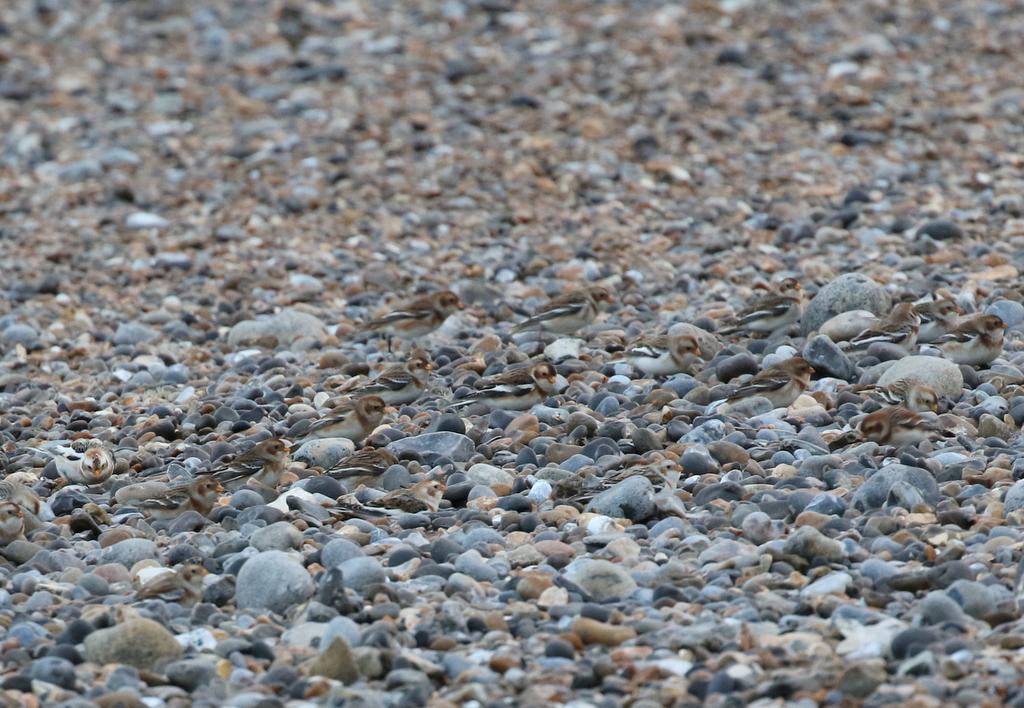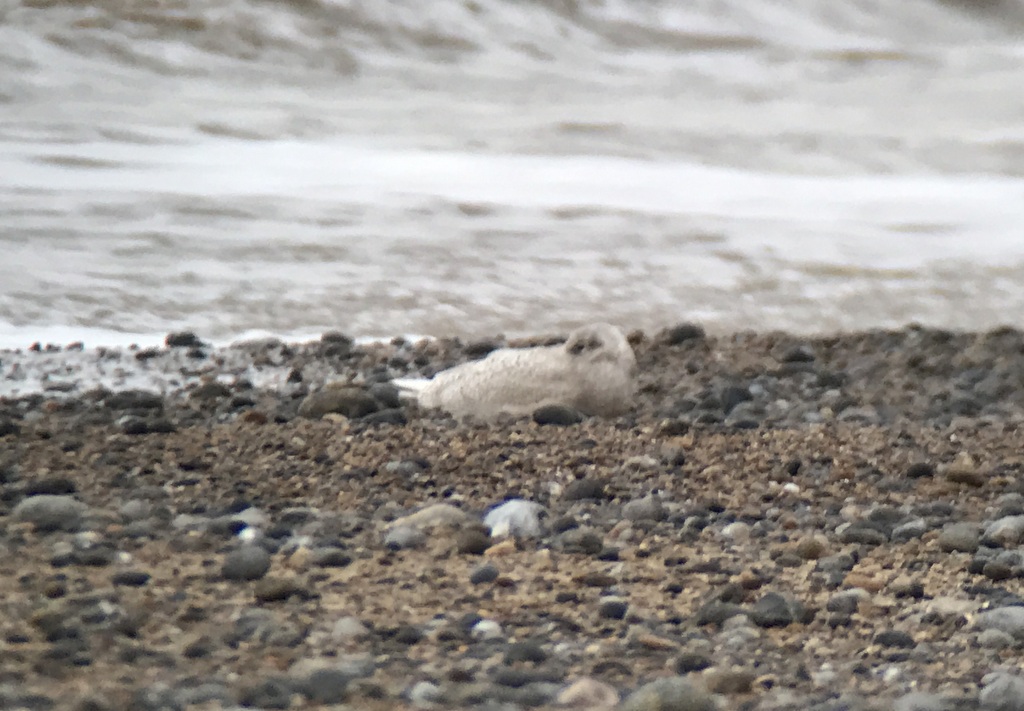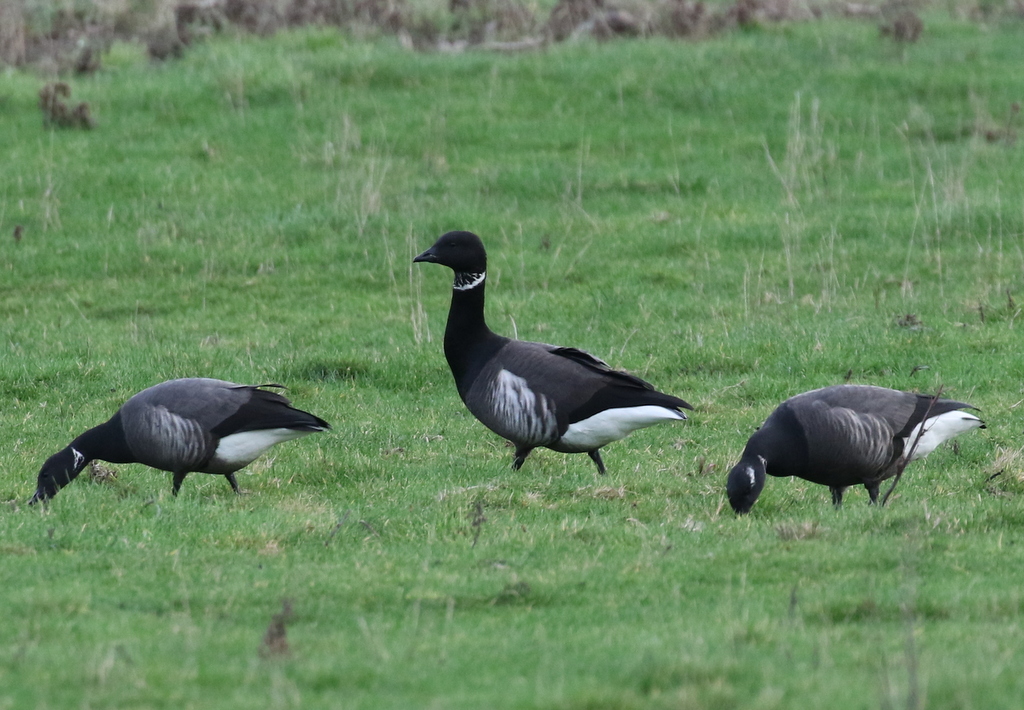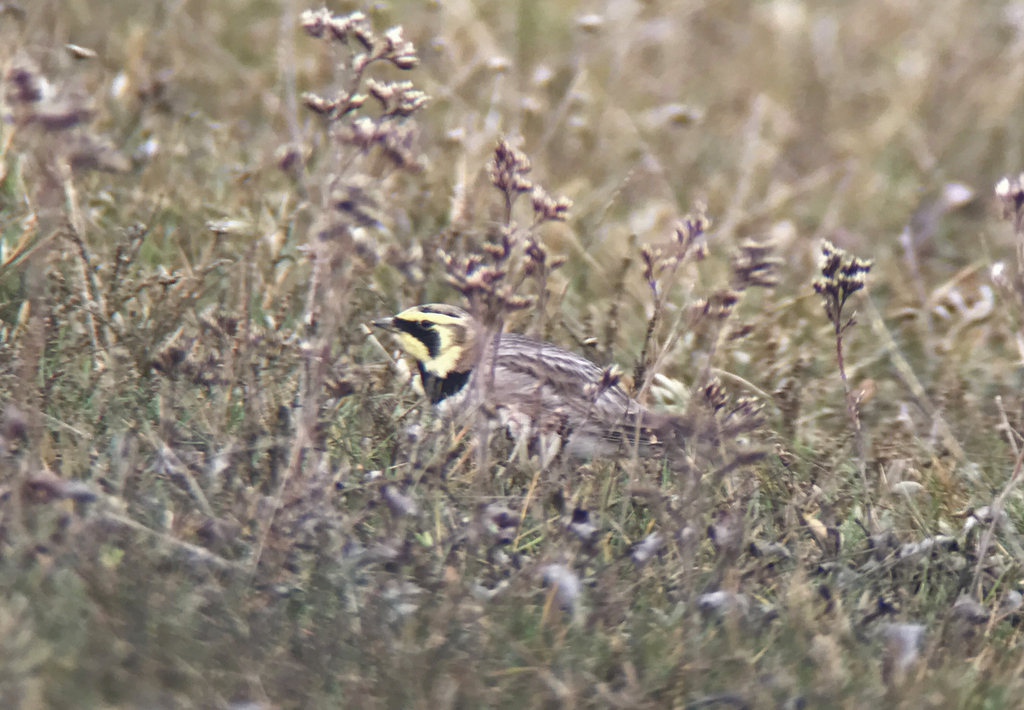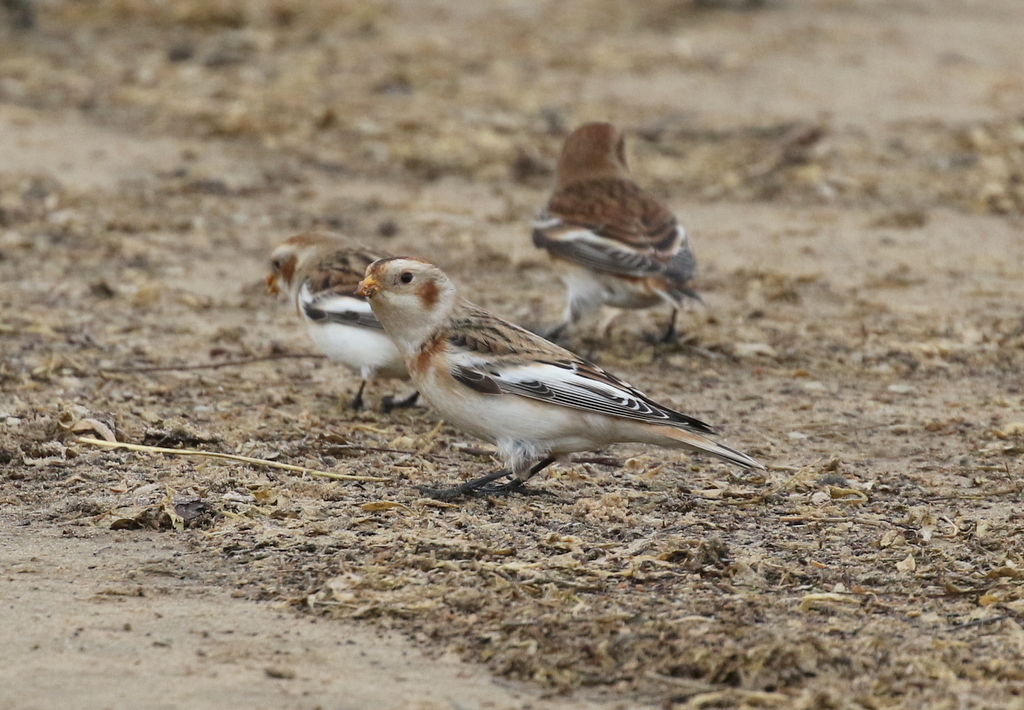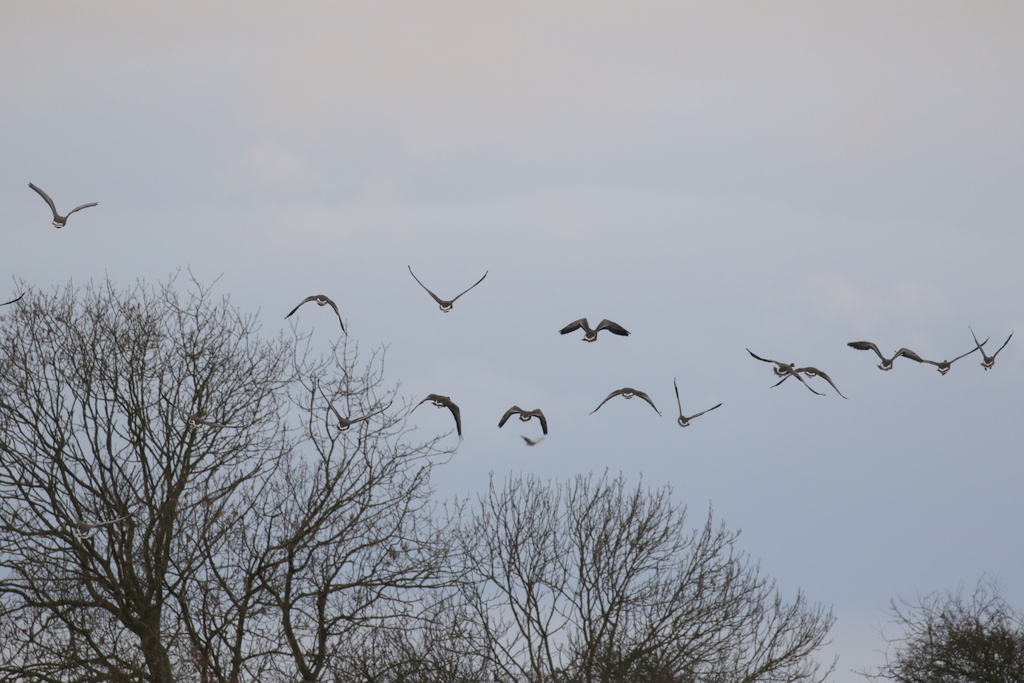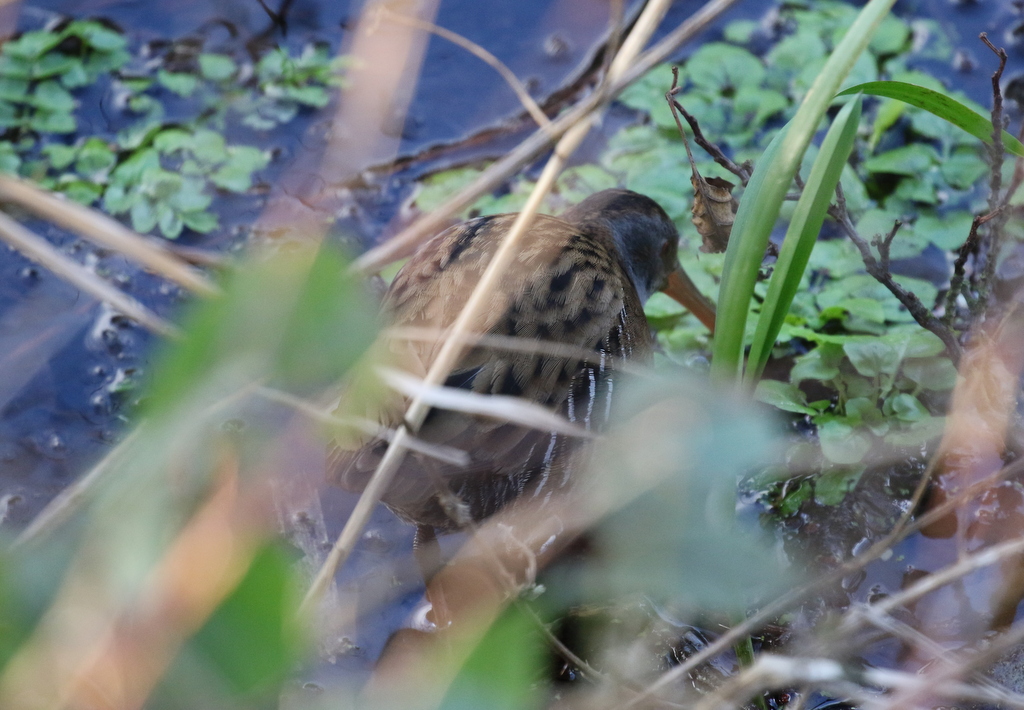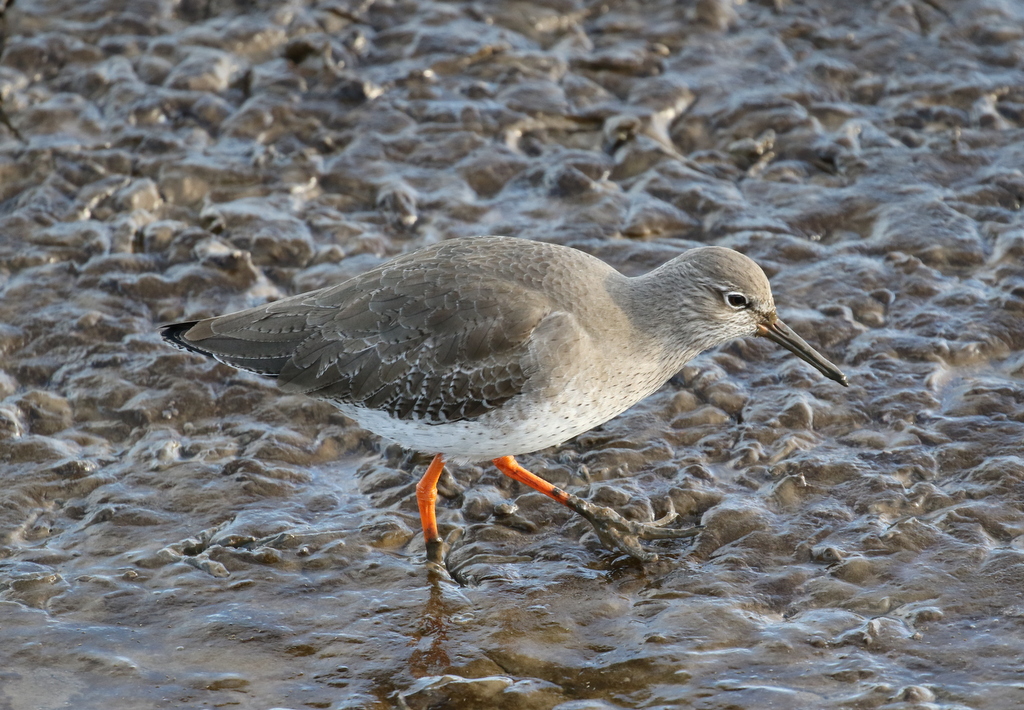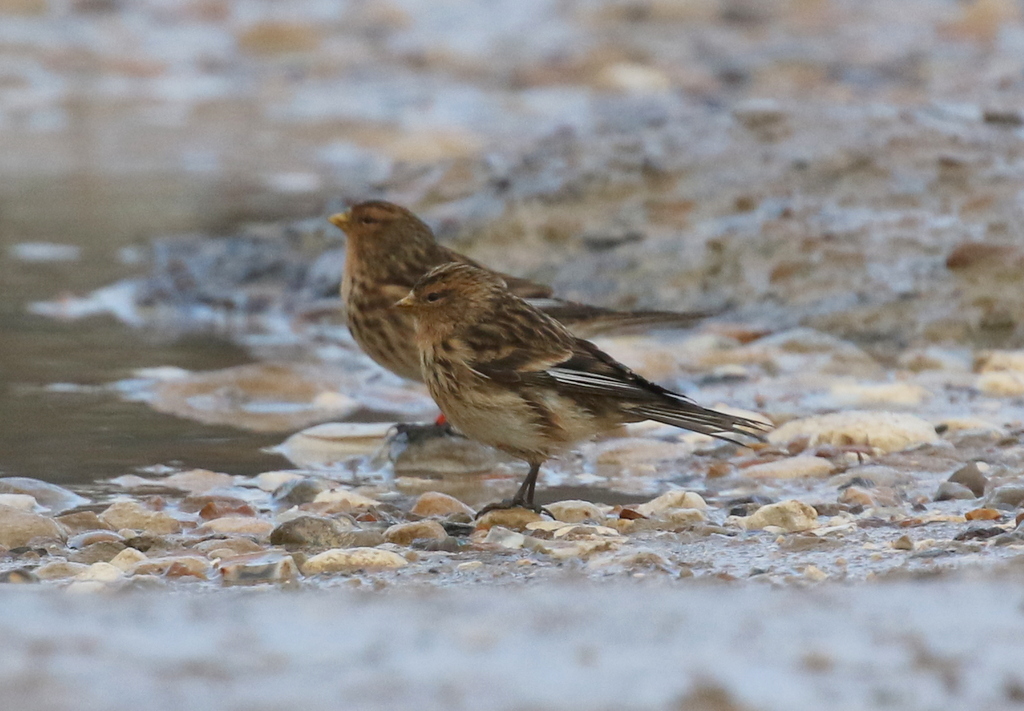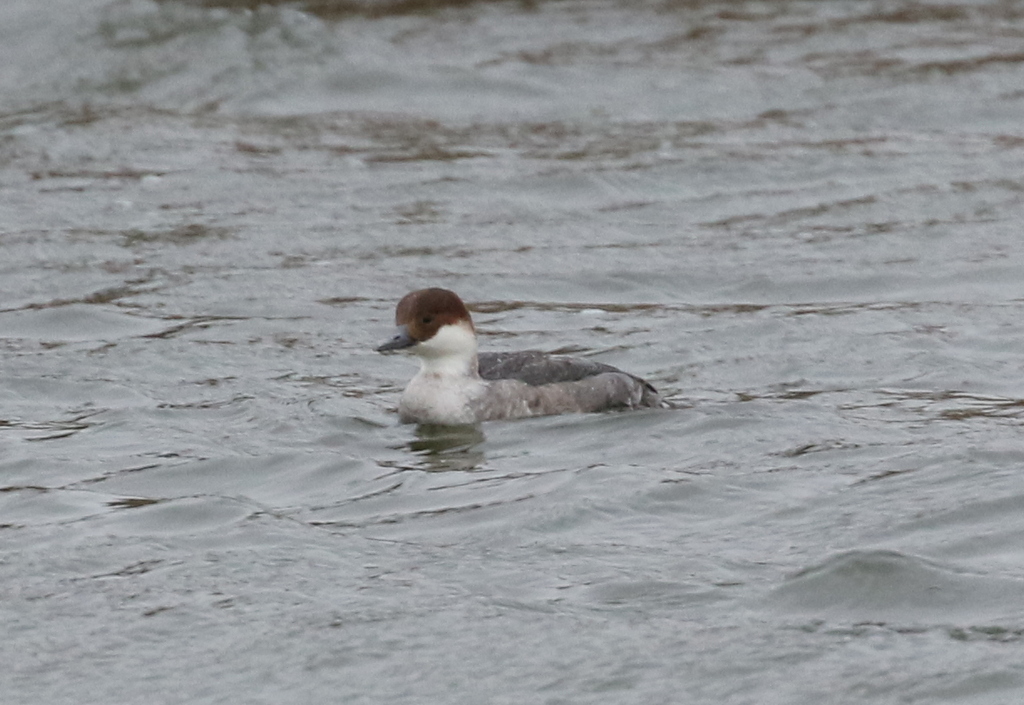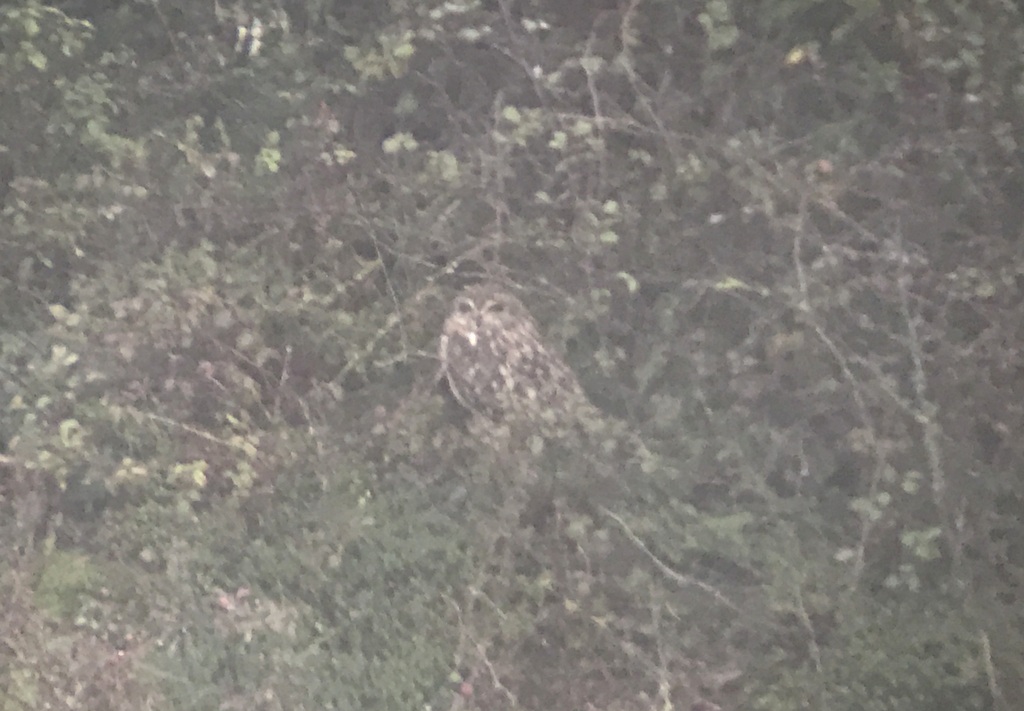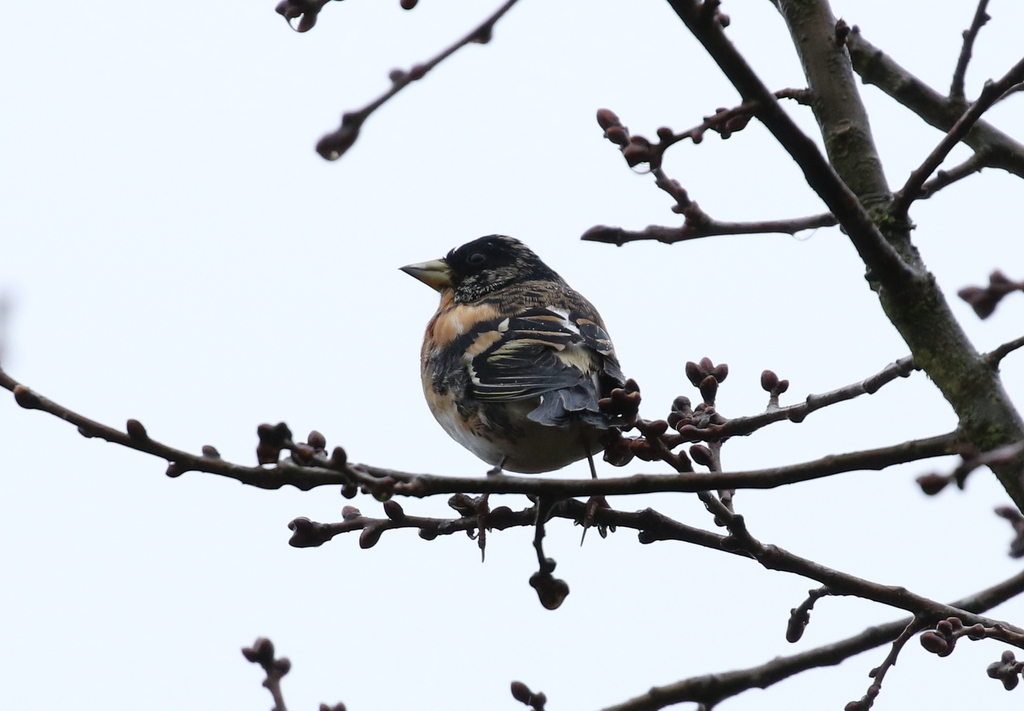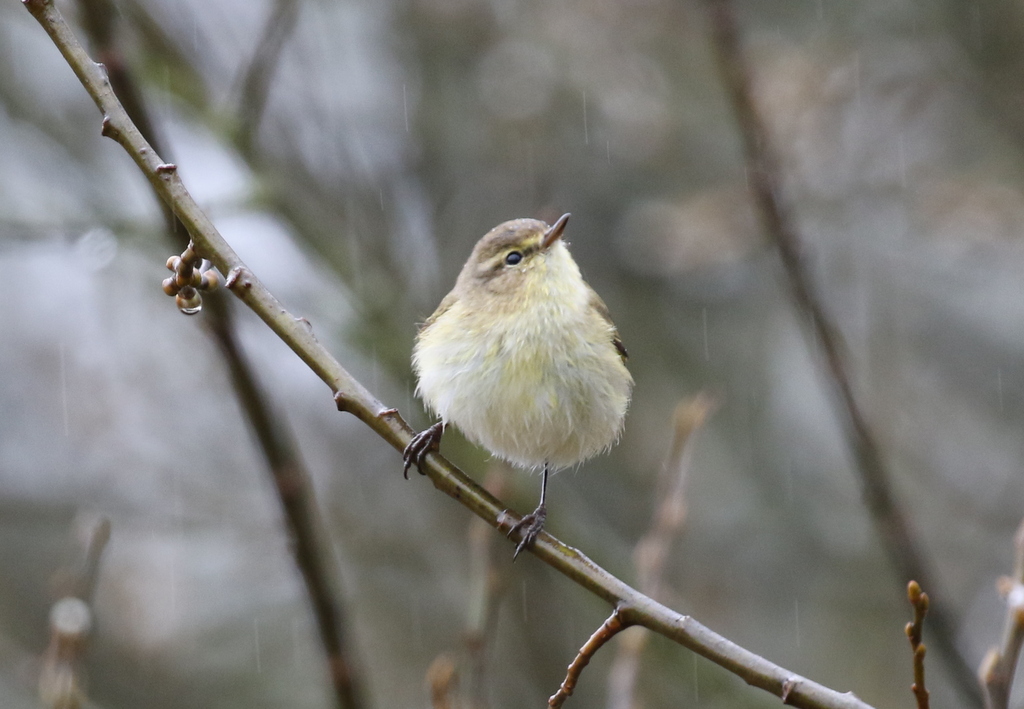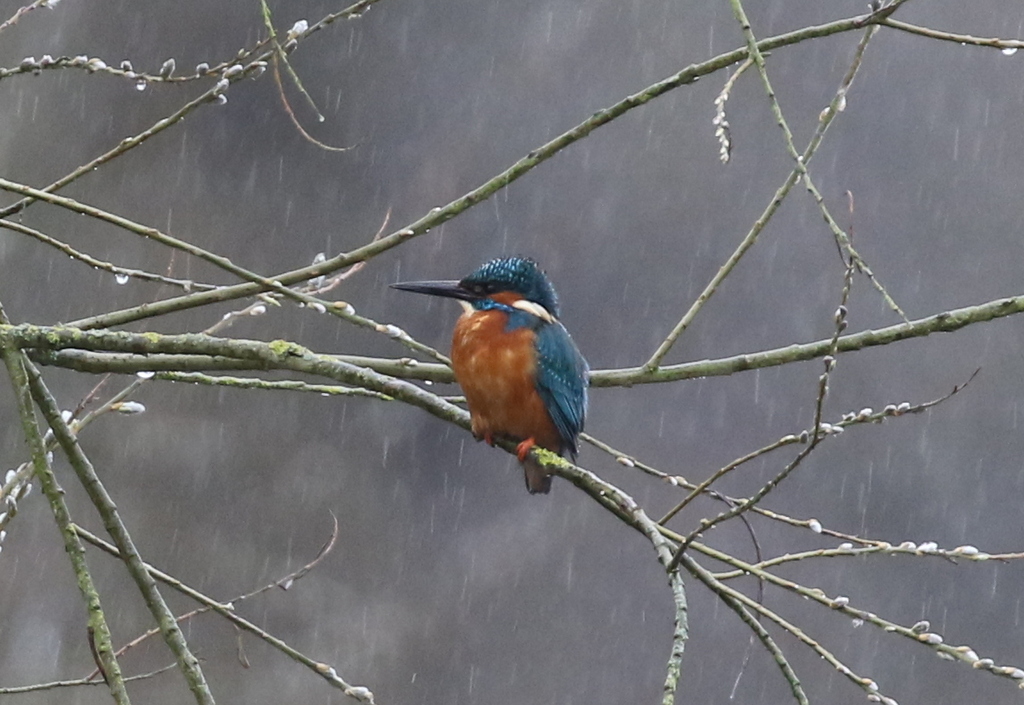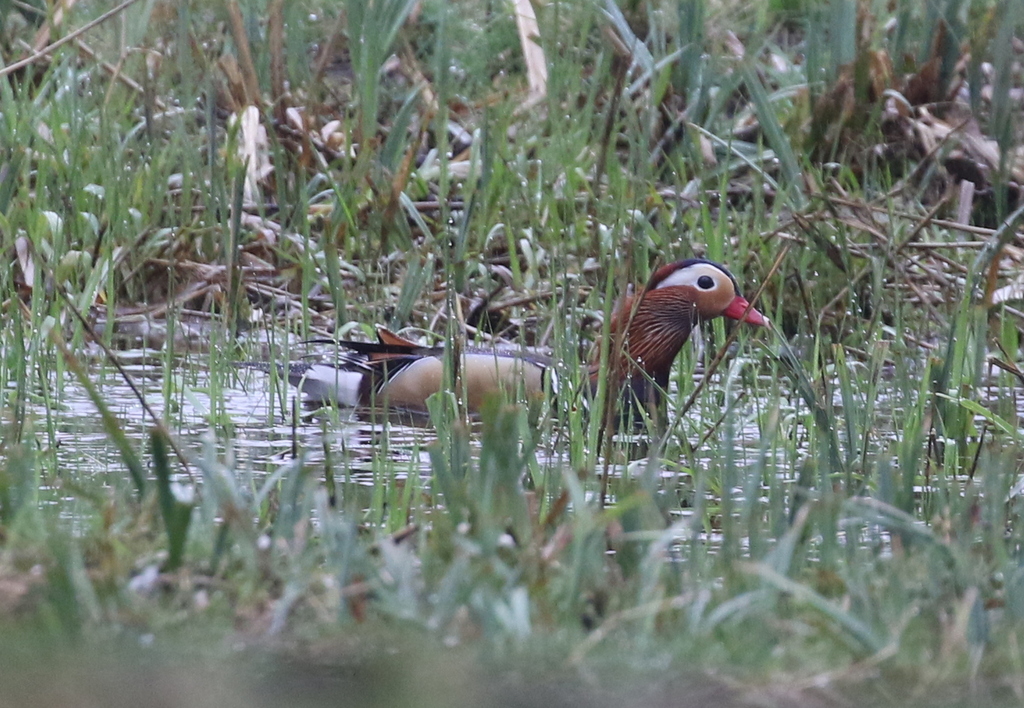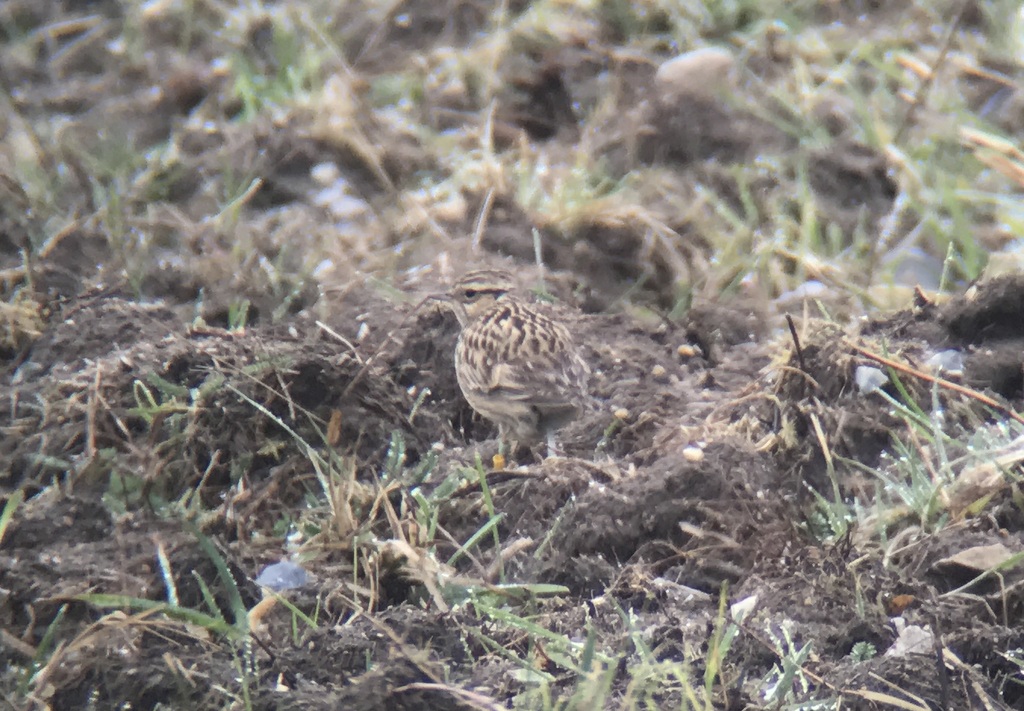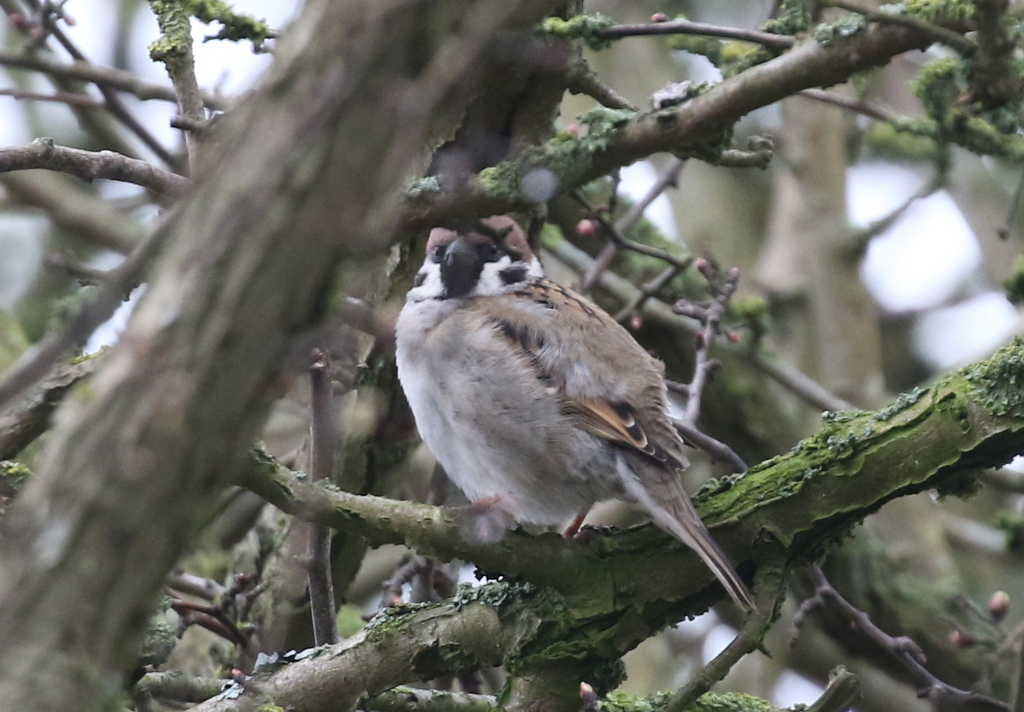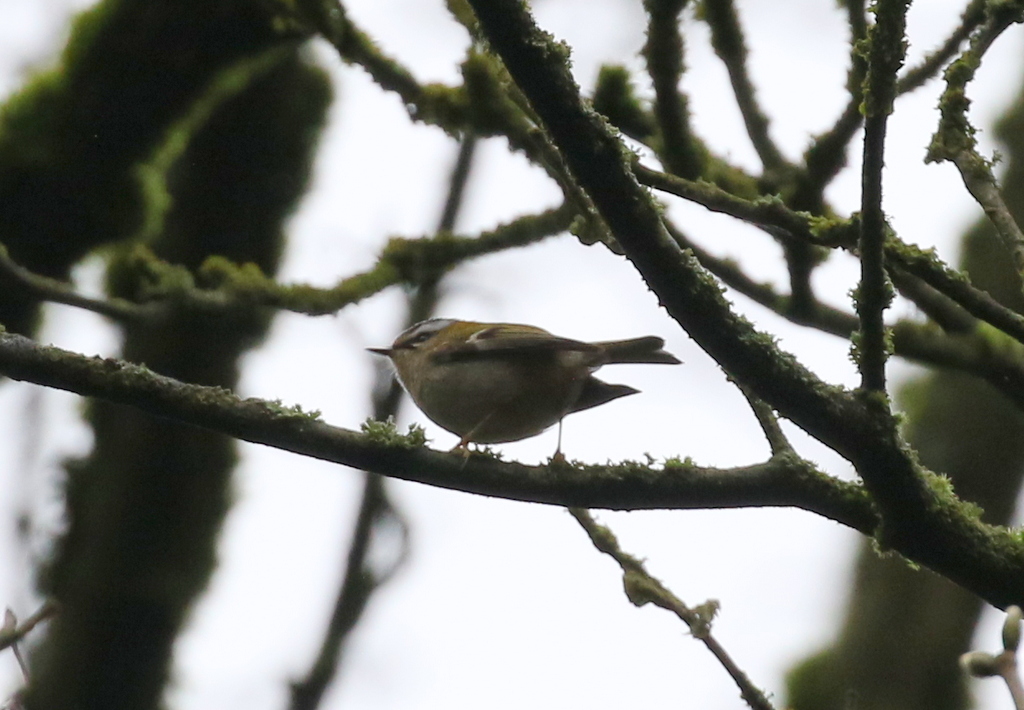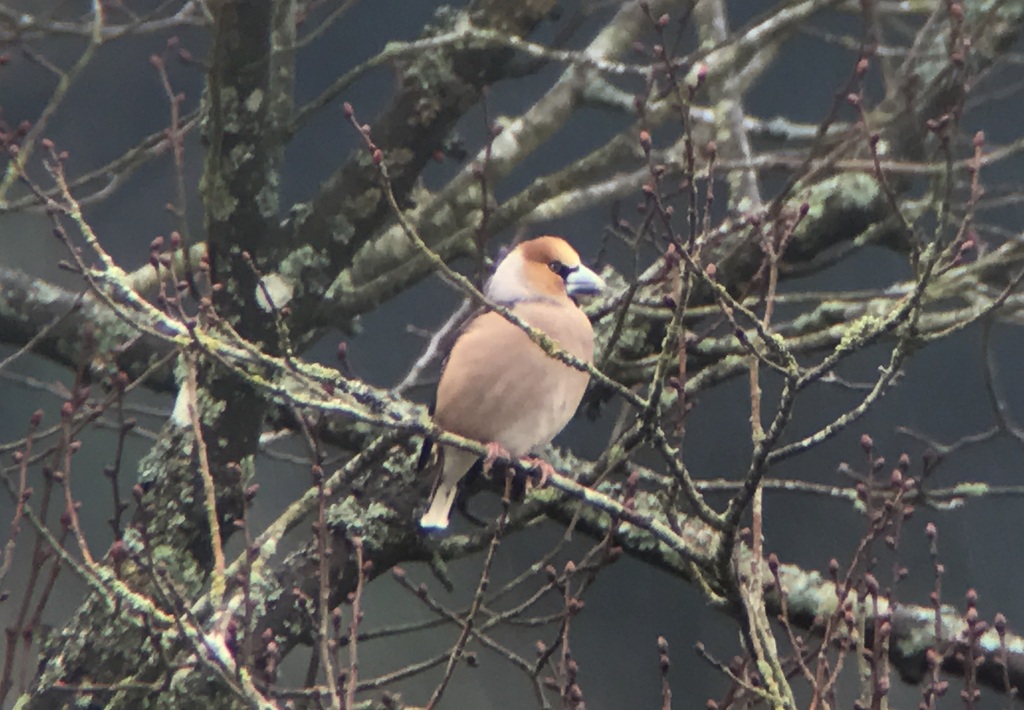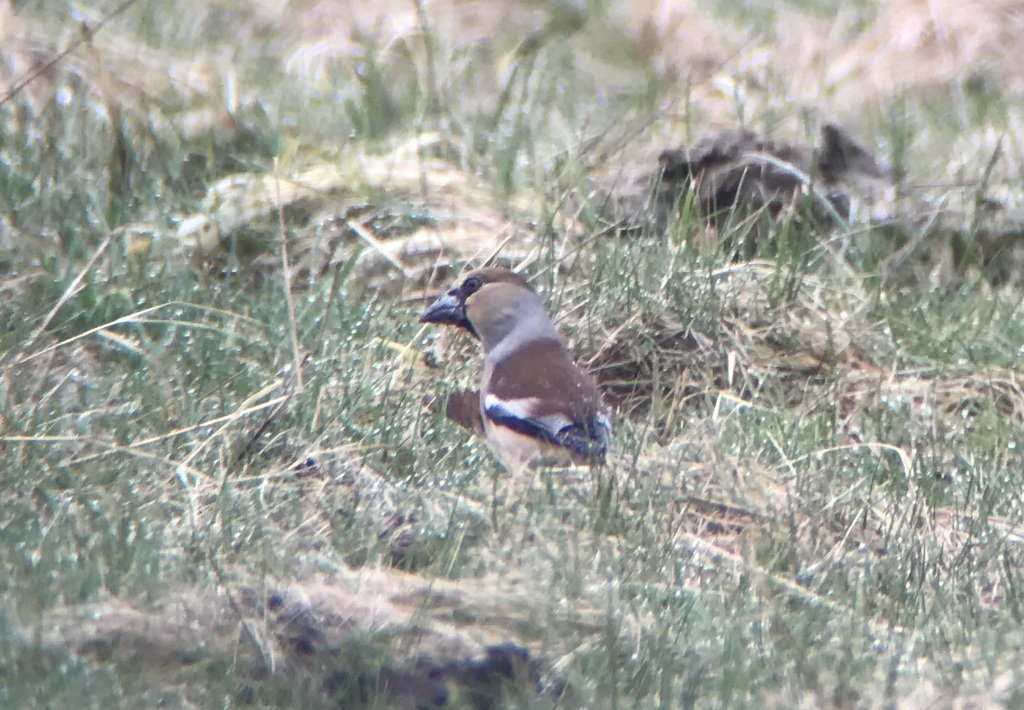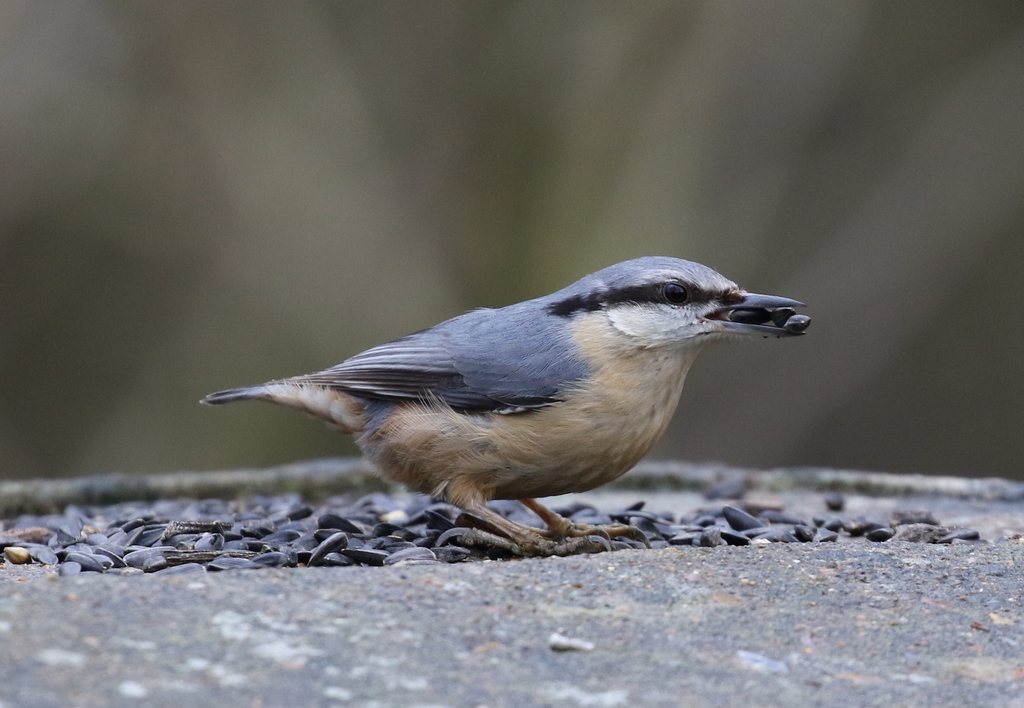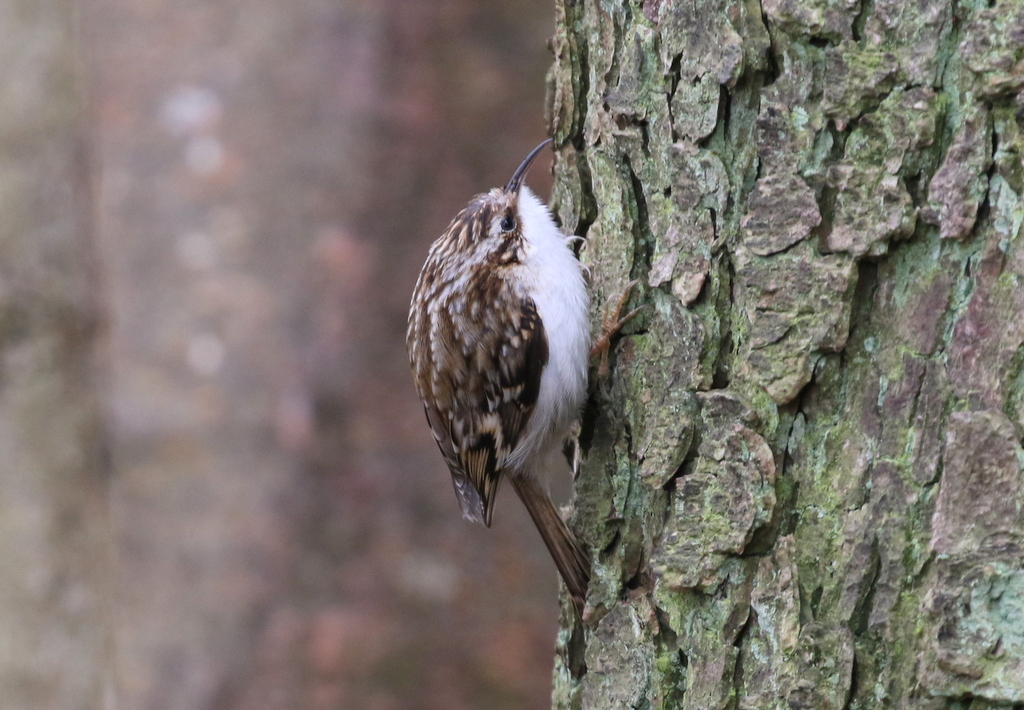Day 1 of a 3-day Winter & Brecks tour today. After a grey start, it brightened up nicely by mid-morning and we had some good sunny spells before it clouded over again later in the afternoon. It was cold in the nagging E wind, but warmer in the sunshine when you go out of it. We spent most of the day down in the Brecks.
There had been a Rustic Bunting found yesterday at Helhoughton and with early news that it was still there this morning, and with it being almost on our way down to the Brecks, we decided to call in there first. There were quite a few cars parked along the verge already by the time we arrived but we found somewhere to pull off the road not far from the crowd. As we got out, we could see they were all watching something so we hurried down. The Rustic Bunting was perched in the top of the hedge along one side of the field so we got the scope on it quickly. Most of the group got a look at it through the scope before all the birds too off and the Rustic Bunting was lost in the flock as some flew off across the road and others dropped down out of view into the tall vegetation in the wild bird seed mix strip where the birds were all feeding.
We waited a while to see if it might come back up again. There had been a nice mixed flock of Redpoll here too yesterday, and having heard one flying over when we got out of the minibus, we hoped there might still be some around today. There are lots of Yellowhammers and Reed Buntings feeding in the field here and from time to time one or two would perch on one of the hedges so we could get a good look at them in the scopes. There were a few Chaffinches and Goldfinches too, but it gradually became clear that the Redpolls were not around. There was no further sign of the Rustic Bunting, but it did disappear at times for several hours yesterday. A Kestrel was hovering further back and a few Common Buzzards and a Red Kite appeared over the trees beyond. With the sun looking like it might be starting to break through, we decided to move on.
We drove on down into Thetford Forest and over over to the usual spot on the high ground looking over the trees to scan for Goshawks. We were here a bit earlier than we would normally, but we had an idea it might get busy today and with some sunshine for the first time in a couple of days we thought we might get lucky with some early activity. There were several Common Buzzards up when we arrived, including a strikingly pale one, and a Red Kite low above the trees.
We didn’t have to wait too long before we picked up a distant Goshawk circling. We got it in the scope and as it turned and caught the sun, we could see its very pale underparts and silvery grey upperparts. A good start. Not long after, another Goshawk came up out of the trees much closer to us but it was flying with the wind and, hugging the tops, it was carried quickly west. Down in the corner, it paused to chase in and out of the trees flushing all the Woodpigeons, before continuing on and out of view.
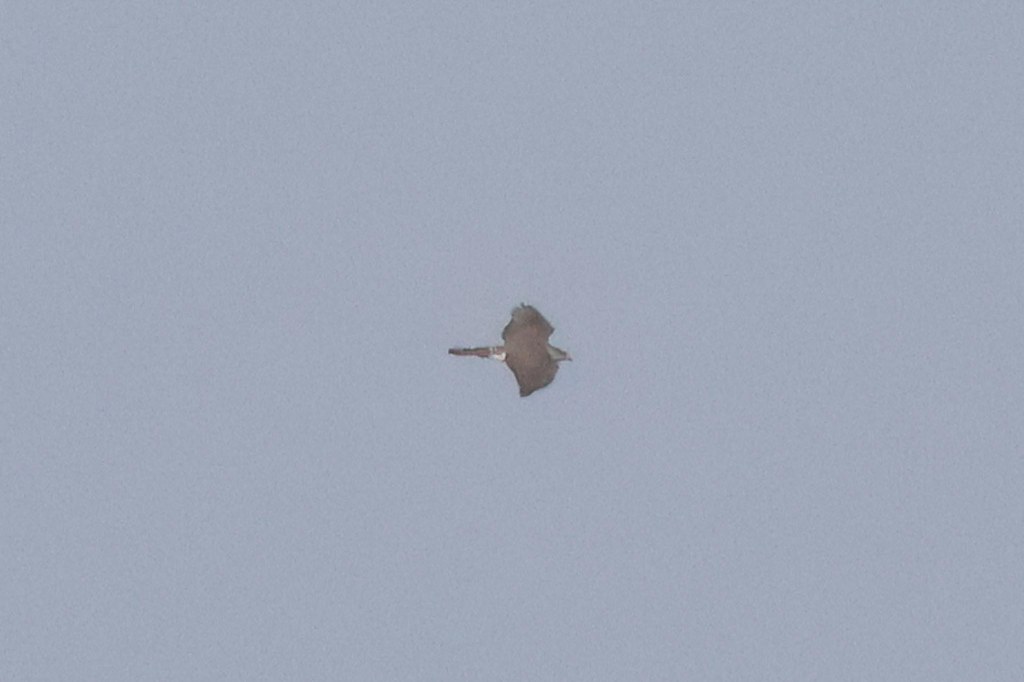
A couple of Lapwings were displaying over the field behind us and a Mistle Thrush perched in the very top of a spruce in the sunshine. Several Skylarks were singing and one fluttered up into the sky in front of us. We heard a Woodlark call too and turned to see it hanging in the air behind us before it was carried by the wind quickly away. After a while, the Goshawk we had seen earlier, chasing pigeons, flew back in. It cut the corner, across the edge of the field, and flying into the wind now it was making much slower progress which made it easier to get on. We had a good view now as it flew across over the trees in front of us, before dropping back in.
We waited a little longer and another hawk flew up out of the trees. It was clearly darker and came up with a couple of bursts of rapid flapping before it started to circle, a female Sparrowhawk and nice to contrast it with the Goshawks we had just been watching. Even better, it stooped at a nearby Common Buzzard a couple of times so we could see just how much smaller it was – otherwise it is very hard to judge the size properly of a lone object in an empty sky.
More cars had arrived and it was getting busy here now. The raptors seemed to go a little quiet too – the Common Buzzards mostly dropped back into the trees. Even though it was sunny, there was a distinct chill to the easterly wind and the air wasn’t really warming up. We had already enjoyed good views of the Goshawks so we decided to move on and go for a walk elsewhere, so we could warm up a little!
We drove deeper into the Forest. Several cars were parked at the head of a ride, and we found somewhere to pull off the road too. As we walked in, the sun was out and it was sheltered in the trees, but as we got out into the clearing and turned into the wind it felt very cold. Scanning the trees, there was no immediate sign of the Great Grey Shrike we had come hoping to see. We walked down a little further, where someone was standing on the track with a scope, and he told us that apparently it had been here about ten minutes ago, so we figured it had to still be here somewhere.
We continued to scan and it wasn’t long before one of the group spotted the Great Grey Shrike fly up into one of the trees. We had nice views through the scopes now, closer than it had been on our previous visits. Several times we watched it drop down and come back up with beetles which it quickly devoured.
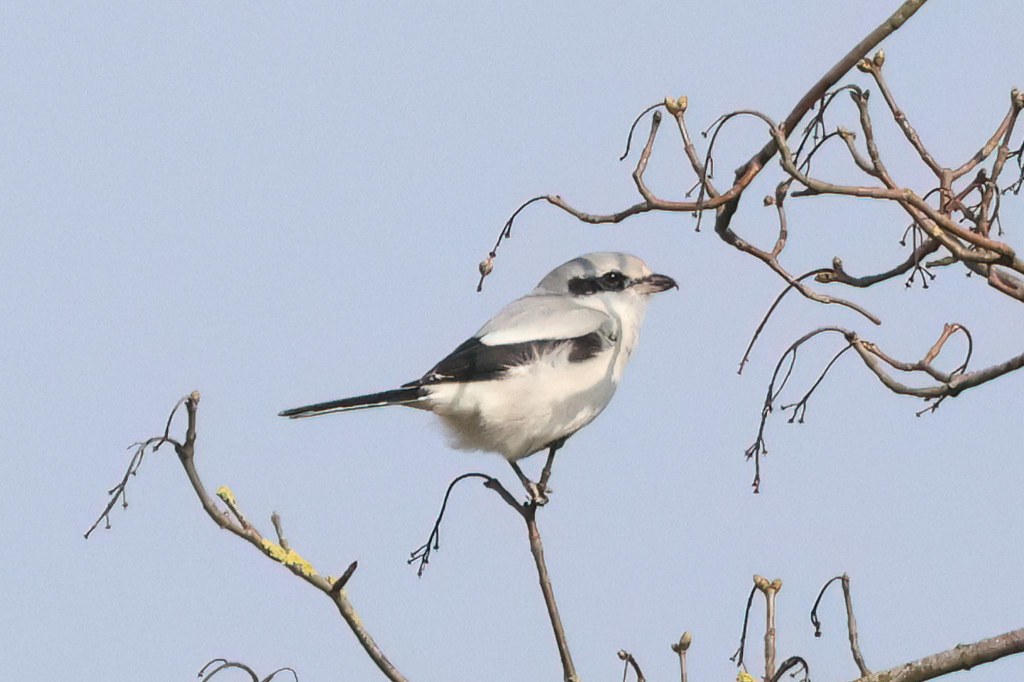
We had heard a brief snatch of quiet song from a Woodlark when we arrived, but they were fairly quiet in the cold today. Now a pair of Woodlarks flew up and across in front of the Shrike, before dropping down on the path ahead of us. We watched them feeding on the edges of the track and walking across from side to side.

A pair of Stonechats perched up on some tall dead mullein stems in front of us too. When the shrike flew off further back, we were just packing up to leave when we noticed a Goshawk circling up in the distance. It was then joined by a second Goshawk, the male and female circling together. They kept low, repeatedly disappearing behind the tops of the trees, but they were mostly in view on and off for about fifteen minutes before we eventually lost sight of them. It was definitely time to head off and get some lunch now.

We drove over to Lynford and made good use of the picnic tables in the sunshine, sheltered from the wind by the surrounding trees. After lunch, we walked across the road to the Arboretum and down to the gate. There were lots of birds feeding down on the ground, some very smart Yellowhammers and lots of Chaffinches, with Nuthatch, Coal Tit and Marsh Tit all darted in and out. A Jay dropped down and started gulping down peanuts.

A few Siskins came down to drink in the small pond. A Great Spotted Woodpecker appeared on a tree trunk at the back and we had nice views of a Stock Dove with a Woodpigeon just behind the pond. There were no Bramblings at first, but after a while they started to drop down. Several duller females at first, then a few males with their brighter orange shoulders. One or two of the males are sporting very black heads now.

It was a bit of a wait today but eventually a Hawfinch appeared at the back, a female, which we got in the scope. It didn’t stay long though, and flew back up into the trees and disappeared. We waited, but there didn’t seem to be too much Hawfinch activity now- it was early afternoon, and we started to wonder whether they might have gone off already to gather pre-roost, although it was still a bit early even for them. Finally a male Hawfinch appeared at the back, and even though it too spooked and flew back up this time it quickly came down again, and was then joined by a slightly closer female. They stayed a bit longer now, allowing us better prolonged views.
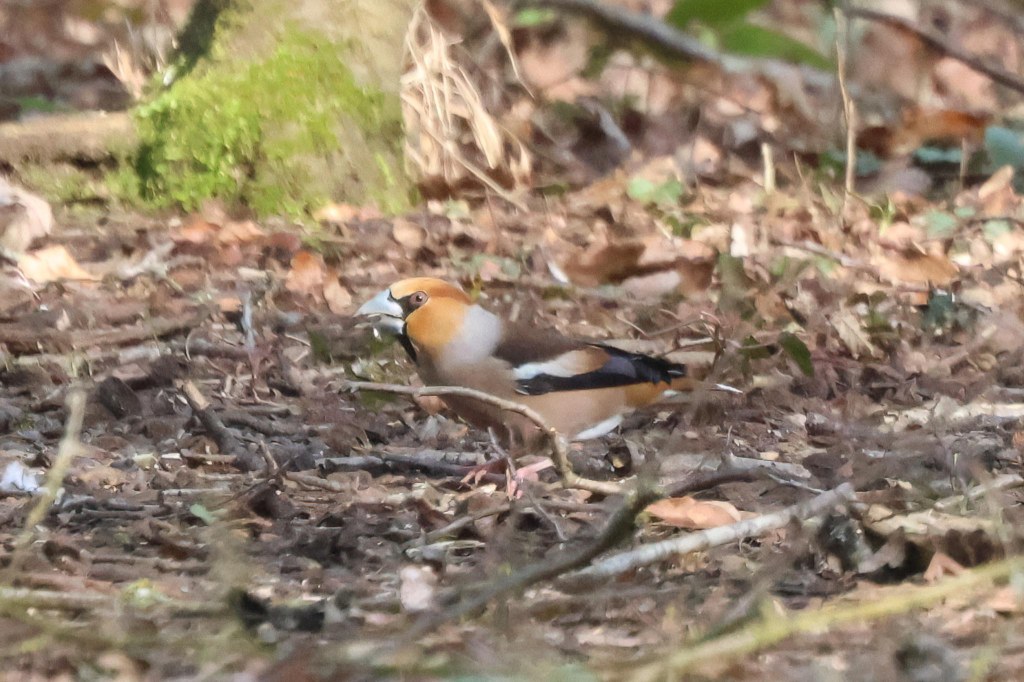
When the Hawfinches flew up again, we moved on and walked down to the bridge. There were a few tits coming and going form the feeders, and we had nice close views of a Marsh Tit. There were more Siskins feeding in the alders overhead. Scanning the tops of the poplars, we found two Common Crossbills in the branches, a smart red male and a greener female, and we had a good view of their distinctive crossed bills in the scope before they dropped down through the branches to drink.
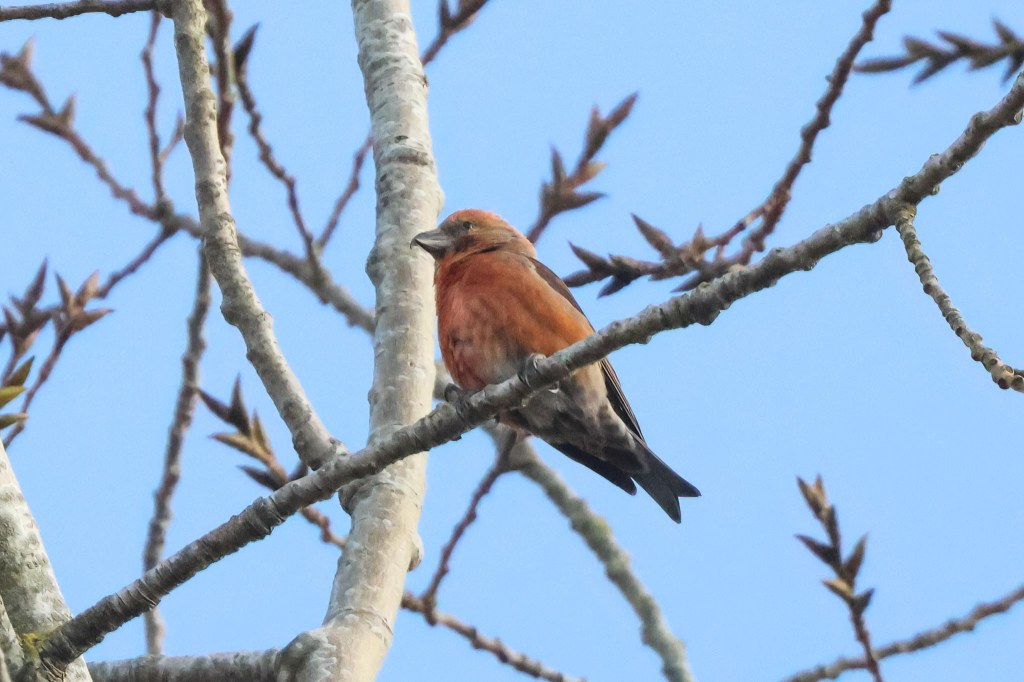
We had already enjoyed good views of Hawfinches up at the gate, so we were not particularly concerned when a quick scan of the trees in the paddocks from the corner appeared fairly quiet, so we decided not to walk on round. Two of the group did walk along a bit further, so as we were planning to walk back now, we went up to collect them. We had heard Fieldfares calling as we arrived at the bridge, and when we looked back at the tops of the poplars, two were perched now in up in the trees.
The sun had gone in by the time we walked back up, and there was a distinct chill still to the easterly wind. We cut in through the Arboretum, thinking it might be sheltered, but it was cold in the trees now and very quiet. We admired the selection of fir trees as we walked round and back at the car park, there was a bit more activity. A few Coal Tits and Blue Tits were chasing round through the trees in the picnic area and two Goldcrests were feeding in the top of one of the pines.
There was time for one last stop on our way back, so we drove over to an area of farmland with a small field planted with a wild bird seed mix. It was cold and grey now and there was no sign of any Tree Sparrows at first. We scanned their favourite bushes but they were particularly exposed to the wind, and we wondered whether some might be hiding deep in the brambles and blackthorn. There were birds flying in and out of the crop, and a few perched in the trees at the back, mainly Yellowhammers and Reed Buntings, which were joined by a small flock of Linnets. We were about to leave when several Tree Sparrows appeared in the bushes, though through the scope we could still just see them tucked in tight at first. After a minute or so they flew out, five of them, across the field, but then turned and landed on top of the hedge now. After a good look through the scope, they disappeared back in.

We were getting cold now, so it was time to head back for tea and cake. We had another day to look forward to and more excitement tomorrow.

